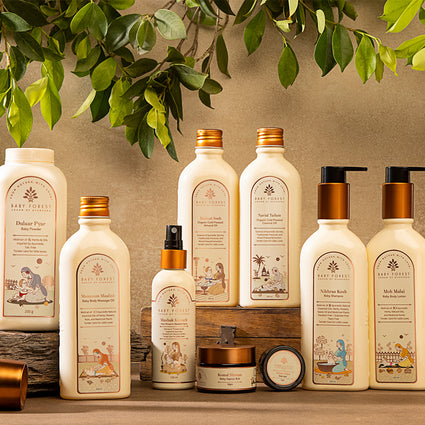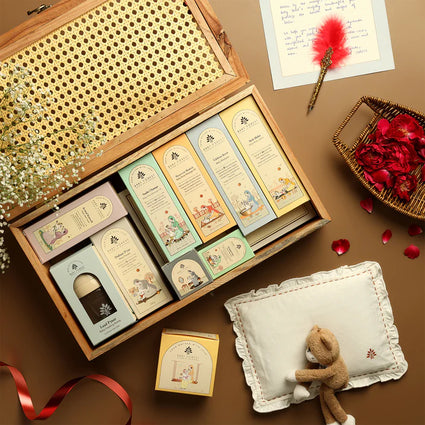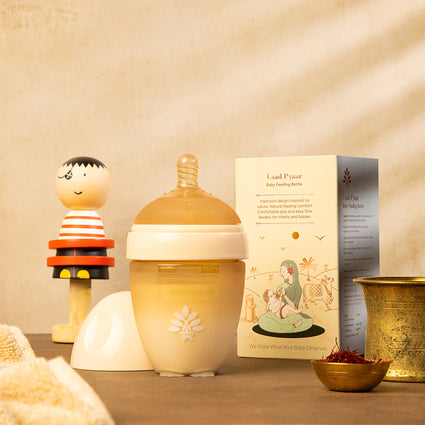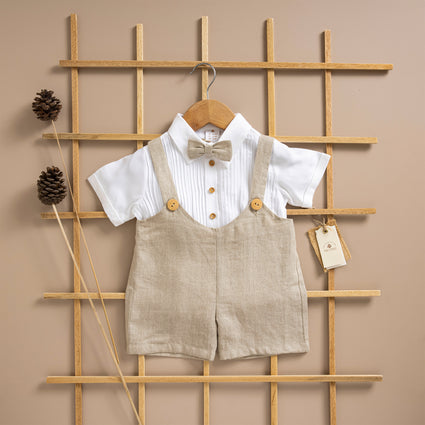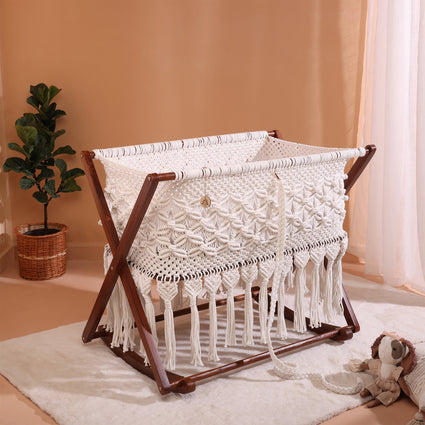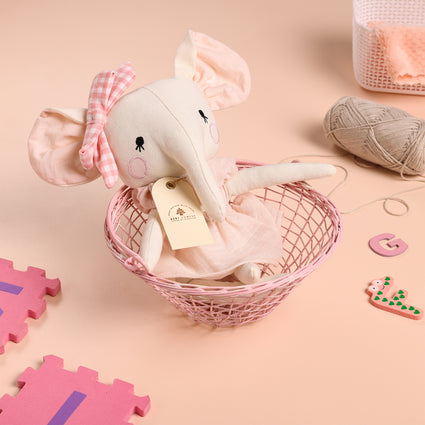Baby Care & Parenting Blogs

First-Time Mom? Know All About Becoming a Mom
For many women, the experience of becoming a first-time mom is like entering an entirely different dimension. It's exciting, overwhelming, gorgeous, and sometimes a little messy...all at once. You may have read books, attended classes, and hear an endless amount of advice from friends and family about parenting, but nothing can truly prepare you for your experience as a mother. It's important to know that, as a mom, you will have many unexpected moments; some heartwarming, some tiring, and some downright confusing, and it is OK!
No mom is immune, and even if they don't talk about it all the time, they are going through it too. So, if you have been asking yourself, why you feel emotional all the time, when you will understand your baby's sleep schedule, or why do you feel like you want your old self back? You are not alone!
The purpose of this guide is to help navigate everything that no one really tells you about motherhood. And just to reassure you, you've got this, mama!
The Emotional Rollercoaster: It's Normal to Feel Overwhelmed
It feels like a rush of emotions, including love, pleasure, terror, and a little anxiety, when you hold your kid for the first time. You may be crying with joy one moment, and then you may feel totally overwhelmed the next. And what do you know? That is quite typical.
In actuality, there are many highs and lows associated with parenthood. On certain days, you may feel as though you have everything under control, while on other days, you may question whether you are doing anything correctly. Every mother experiences these emotions, so it's acceptable to grieve, miss your former life, or feel uncertain.
Just keep in mind that becoming a mother is a learning experience. You don't have to know everything at once, and there is no right or wrong method to go about it. Be gentle to yourself, take things one day at a time, and don't be afraid to ask for assistance when you need it.
Mom Guilt is Real – And How to Overcome It
No one really warns you about the guilt that comes with motherhood, right? You'll find yourself wondering, “Am I doing enough?” Should I have cuddled my baby more instead of cleaning? Did I feed them the right way? It's called mom guilt, and guess what? Almost every mom feels it.
However, the reality is that there is no such thing as being a perfect mother. Your baby only needs you; they don't require perfection. Nothing is more important than your presence, love, and caring. Therefore, give yourself a break. It's acceptable to have a messy laundry pile or a simple dinner. The happiness and health of you and your child are the most important things.
Therefore, keep in mind that you are doing your best, and that is more than enough, the next time guilt starts to creep in. Being a mother is about being there, not about being flawless.
Breastfeeding Isn't Always Easy (And That's Okay!)
You probably pictured breastfeeding as this beautiful bonding moment, and sometimes it is. But the truth is, motherhood doesn't always make it that easy. Many moms face challenges like painful latching, low milk supply, or just feeling completely overwhelmed. And guess what? That's perfectly okay.
If breastfeeding is effective for you, that's fantastic! If it doesn't, that's also acceptable. The most important thing is that your kid is fed, loved, and cared for, regardless of whether you formula-feed, breastfeed, or pump. Motherhood is defined by the love you give your child every day, not by how you feed them.
Therefore, try not to be too hard on yourself. There is no "right" way to feed a baby; every mother's experience is unique. Trust yourself, do what's best for you and your child, and never forget that what counts most is a happy, healthy mother and a happy, fed baby.
Must Read: All You Need To Know About Breastfeeding
You'll Be More Tired Than You Ever Imagined
Forget about the idea of getting a good night's sleep for a bit. Newborn babies have small stomach and will need to eat every few hours, so you'll probably be getting very little sleep. It will probably be truly exhausting and not something anyone can really prepare for.
The best thing to do is sleep when your baby sleeps, accept help from friends and family, and don't feel like you have to do it all yourself. The newborn phase can be rough, but it will only last for a while. You will eventually get more sleep and figure out a new rhythm.
Also Read: Experiencing Motherhood for the First Time
Your Relationship with Your Partner Will Change
Having a baby in your home means that your relationship with a partner may transform as well. Your attention will inevitably begin to shift to the baby, and your relationship with your partner may feel neglected. This is normal and does not mean your relationship is going downhill.
Make time for each other in your new baby dynamic even for just ten minutes of complete uninterrupted conversation. Keep in mind you are a team, and motherhood is easier when there is teamwork and support.
Your Body Will Take Time to Heal – Be Kind to Yourself
One of the most surprising parts of motherhood is realizing how long it takes for your body to heal after childbirth. Whether you had a natural birth or a C-section, recovery takes time. Your body has done something extraordinary so give it grace.
Don't rush to lose the baby weight or feel pressured to look a certain way. Focus on nourishing yourself, resting, and slowly easing into light movement when you're ready. Your body will heal in its own time.
You'll Get Tons of Advice – Learn to Filter It Out
The moment you become a mom, everyone around you suddenly becomes an expert. You'll get advice on feeding, sleeping, bathing, and even parenting styles. While some advice will be helpful, not all of it will apply to you.
Trust your instincts and do what feels right for you and your baby. Motherhood looks different for everyone, and what works for one mom might not work for you. It's okay to politely ignore unsolicited advice.
It's Okay to Ask for Help (And You Should!)
One of the biggest mistakes new moms make is trying to do it all alone. Whether it's cooking, cleaning, or caring for the baby, don't hesitate to ask for help. Motherhood is not meant to be a solo journey.
Reach out to your partner, family, or friends when you need a break. Even a 20-minute nap or a quick shower can do wonders for your mental health. Remember, taking care of yourself is just as important as taking care of your baby.
You'll Find a New Version of Yourself in Motherhood
Before becoming a mom, you had your own identity. You may think that version of yourself is lost after birth. It's simple to lose sight of your former self as you get preoccupied with feeding schedules, diaper changes and restless nights.
The lovely thing is that becoming a mother broadens your identity rather than diminishes it. You will discover patience you never thought imaginable, love you never thought conceivable, and strength you never knew you have. Give yourself permission to grow into this new you.
Conclusion
The path of becoming a mother is exciting, wonderful, and transformative. It's quite normal to feel like you've got everything under control on some days and to wonder if you're doing anything correctly on others. In actuality, there is no ideal way to be a mother. It all comes down to self-compassion, tolerance, and love.
Motherhood isn't about getting everything right; it's about showing up every day with love.

Diapering Essentials Checklist: Must-Have Items for Newborns
Bringing your newborn home is a very special time. As you settle into your new routine and get to know your baby, you'll quickly realize that some tasks become a big part of your day. One of the most frequent (and important!) ones? Diapering. It might just feel like a full-time job! It's so easy to forget how to change a diaper, or if you are a parent for the first time, you may want a diapering refresher! If you have good-quality diapering items and helpful diapering essential goods, it will make taking care of your little one a whole lot easier.
From keeping your baby comfy to avoiding messy surprises, let's go over everything you need to make diapering simple and stress-free!
Choosing the Right Diapers: Cloth vs. Disposable
One of the first decisions you'll face is choosing between cloth and disposable diapers.

-
Cloth Diapers:
Cloth diapers are environmentally friendly, reusable, and usually gentle on your baby's skin. You can find cloth diapers in a variety of different styles, from prefolds to all-in-ones. Thankfully, cloth diapers are more convenient than ever. -
Disposable Diapers:
Disposable diapers are super absorbent, useful, and an good fit for parents who prefer convenience. Just check for ones that are free from harsh chemicals, to avoid irritating your baby's sensitive skin.
There's no right or wrong choice pick what works best for you!
Baby Wipes: How to Pick the Best One for Your Baby's Skin
You'll go through a lot of baby wipes, so choosing the right kind is important.
- Opt for fragrance-free, hypoallergenic wipes to avoid skin irritation.
- Organic or water-based wipes are a great option for sensitive skin.
- Consider biodegradable wipes if you're looking for an eco-friendly choice.
Pro tip: Always do a patch test before using a new brand on your baby's skin.
Diaper Rash Cream: Preventing & Treating Irritation
Diaper rashes happen to almost every baby, but don't worry—they're totally manageable! The trick is to be prepared. A good diaper rash cream acts like a shield, keeping moisture away and calming irritated skin.
Look for creams with natural ingredients like zinc oxide, aloe vera, or coconut oil—they're gentle and super effective. And here's a pro tip: applying a thin layer at every diaper change can help prevent rashes before they even start. A happy bum means a happy baby (and a less stressed you)!
Changing Pad & Covers: Keeping Diaper Changes Clean & Comfortable
A portable changing pad is a lifesaver, whether you're at home or out and about.
- Choose a waterproof pad for easy cleaning.
- Keep extra covers on hand to swap out after messy diaper changes.
- Consider a travel-friendly changing pad for on-the-go convenience.
Having a dedicated changing area can make diapering smoother and more organized.
Diaper Bag Essentials for On-the-Go Parents
Your diaper bag will become your best friend when you're out with your baby. Here's what you should always pack:
- Diapers (at least 4-6 per outing)>
- Baby wipes
- Diaper rash cream
- Changing Sheet
- Extra baby clothes
- Burp cloths
- Hand sanitizer
- Small plastic bags for soiled diapers
A well-stocked diaper bag ensures you're always ready for any surprise messes!
Diaper Pail & Liners: Managing Odours & Hygiene
Diapering means dealing with waste, and a good diaper pail helps keep odors under control. Choose one with:
- A tight-sealing lid to trap smells
- Biodegradable liners for an eco-friendly option
- A hands-free design for easy disposal
If you're using cloth diapers, a wet bag or pail with a washable liner is a must-have.
Extra Clothing & Burp Cloths: Handling Unexpected Messes
Babies are unpredictable, and diaper leaks happen. Always keep extra clothing and burp cloths nearby to handle accidents. Soft, breathable cotton outfits are the best choice, and burp cloths can double as quick clean-up rags.
Nighttime Diapering: What You Need for Longer Sleep
A good nighttime diapering setup can help your baby sleep longer without discomfort.
- Use highly absorbent diapers to minimize overnight leaks.
- Apply a thick layer of diaper rash cream before bed.
- Keep diaper changes quick and quiet with a soft night light and pre-prepared supplies.
The goal is to keep your baby dry and comfortable so they can sleep soundly.
Conclusion
Diapering might seem like a big task at first, but with the right diapering essentials, it's a breeze! From picking the perfect diapers to keeping a well-stocked diaper bag, having the right gear makes all the difference. A little preparation goes a long way before you know it, you'll be handling diaper changes like a pro, so no stress is needed!

Secrets of Licorice: Ancient Remedy or Modern Superfood?
Parenting is a journey of continuous learning, blending tradition with modern care. Licorice, known as mulethi in India, is a natural herb valued for its soothing, antimicrobial, and anti-inflammatory properties. Exploring the Secrets of Licorice reveals how it can enhance your baby’s daily care with gentle, natural benefits—like using Organic Licorice for purity or Licorice Root Sticks for traditional wellness.
What is Licorice?
Licorice is a beloved herb, prized for its naturally sweet taste, soothing qualities, and healing potential. The Secrets of Licorice reveal themselves in its long-standing use in herbal remedies, where its anti-inflammatory and antimicrobial properties shine, supporting wellness in gentle, effective ways. Whether it’s Real Black Licorice, offering an authentic, robust essence, or Organic Licorice, delivering a pure and clean touch, this herb adapts to countless needs. Beyond its role in baby care—like calming irritated skin or easing mild congestion—it extends into broader traditions, bridging ancient wisdom with modern parenting. From vapor rubs to teething aids, licorice proves its versatility, providing a natural boost to daily routines. Its sweet charm and protective benefits make it a standout choice for nurturing little ones, ensuring comfort without harsh chemicals—a perfect blend of nature’s best for today’s caregivers seeking reliable, time-tested solutions.

Benefits of Licorice in Baby Care Products
Licorice has become a cornerstone in baby care, delivering gentle nourishment and protection that parents can trust—picture it as the Best Licorice for your tiny tot. Unlocking the Secrets of Licorice unveils its remarkable benefits, making it a standout ingredient in products designed for little ones. This herb’s natural properties soothe and shield, offering a safe, effective way to care for delicate skin and beyond. From calming irritations to providing a protective barrier, licorice proves its worth in everyday routines. Its gentle touch ensures babies stay comfortable without harsh chemicals, blending tradition with modern care seamlessly. Whether in creams, rubs, or cleansers, licorice enhances the nurturing experience, showing why it’s a go-to choice for thoughtful parenting today.
-
Gentle on Delicate Skin
Licorice brings its anti-inflammatory magic to baby care, easing redness and irritation with a soft, calming effect—perfect for diaper rash creams and soothing treatments. The Secrets of Licorice spotlight how it comforts sensitive skin, offering a gentler approach than something like Cinnamon Licorice might imply with its bolder profile. This herb works wonders on tender areas, reducing discomfort without overwhelming delicate systems. Parents can rely on its natural properties to keep their baby’s skin smooth and irritation-free, especially during those fussy moments. Unlike harsher options, licorice provides a nurturing touch that aligns with the needs of little ones, making it a staple in gentle care routines that prioritize safety and comfort above all.
-
Protection Against Bacteria
Licorice’s antimicrobial strength steps up in baby care, guarding fragile skin against harmful bacteria with ease. It shines in vapor rubs, soothing mild colds and congestion—a subtle treasure within the Secrets of Licorice, far from the intense flavor of Chocolate Licorice, which isn’t suited for babies. This herb acts as a natural shield, keeping infections at bay while offering relief during stuffy nights. Its protective qualities extend beyond the surface, ensuring your little one stays healthy and comfortable. Safe and gentle, licorice in these products provides peace of mind for parents, blending efficacy with nature’s care. It’s a quiet hero in maintaining baby wellness without relying on synthetic additives.
-
Natural Cleanser in Baby Products
Infused in shampoos and soaps, licorice keeps baby skin soft and tackles issues like cradle cap with a tender touch. The Secrets of Licorice reveal its knack for gentle cleansing, surpassing flavored varieties like Strawberry Licorice that don’t fit baby-safe formulas. This herb cleans without stripping natural oils, leaving skin smooth and nurtured—a perfect ally for daily baths. Its soothing nature ensures even the most sensitive scalps stay calm, making it a parent’s friend in maintaining hygiene naturally. Licorice stands out for its ability to care gently, avoiding the harshness other cleansers might bring, and keeps your baby’s skin in top shape with ease. -
A Healthy Sweetener
Licorice offers a natural sweetness that safely replaces refined sugar in teething products, easing the baby’s discomfort with care. This lesser-known perk among the Secrets of Licorice makes it ideal for little ones, not like Chocolate Licorice, crafted for adult indulgence. Its mild flavor comforts without overloading tiny systems, providing a gentle alternative in soothing gels. Parents can trust this herb to deliver sweetness that’s safe and effective, steering clear of artificial additives. Licorice’s role here highlights its versatility, ensuring teething moments are less stressful and more natural, keeping your baby happy and healthy with every use. -
A Natural Mosquito Repellent
Licorice powers mosquito repellents and patches, creating a soft yet strong shield against insects for your baby. The Secrets of Licorice extend to this natural defense, with Real Black Licorice extract boosting its strength beyond flavors like Cinnamon Licorice or Strawberry Licorice. This herb keeps bites at bay without harsh chemicals, offering a gentle barrier that’s safe for delicate skin. It’s a smart, natural way to protect your little one outdoors, blending efficacy with care. Licorice proves its worth here, giving parents a worry-free option to keep their baby comfortable and bite-free every day.
How to Use Licorice Safely
Using licorice safely unlocks more of its Secrets of Licorice for your baby’s care:
- Patch Test: Always test a small amount—like a dab of Black Licorice-infused cream—on your baby’s skin to check for reactions.
- Choose Baby-Specific Products: Use products formulated for babies to ensure the right concentration, avoiding strong types like Black Licorice.
- Follow Label Instructions: Stick to the recommended usage to avoid overexposure with this Best Licorice.
- Consult Your Pediatrician: Before introducing new products, seek medical advice for your baby’s safety, especially with unique options like Licorice Root Sticks.
Conclusion
Licorice is a gentle yet effective ingredient in baby care, offering soothing and protective benefits. By understanding the Secrets of Licorice, you can opt for baby-friendly formulations and consult your doctor before introducing new products to ensure the best care for your little one.

Understanding Your Menstrual Cycle and Ovulation
Understanding your menstrual cycle and ovulation is key to mastering fertility and health. Whether planning a pregnancy or monitoring your body, this guide breaks it down simply. From phases to tracking methods, we’ll help you navigate this natural rhythm with confidence and care.
What is the Menstrual Cycle?
The Menstrual Cycle and Ovulation define the time from the first day of one period to the first day of the next. A typical cycle lasts between 21-35 days, with 28 days being the average. Using a Period and Ovulation Tracker can simplify understanding these phases:
- Menstrual Phase: Shedding of the uterine lining, leading to bleeding (3-7 days).
- Follicular Phase: The body prepares for ovulation by developing follicles in the ovary.
- Ovulation Phase: A mature egg is released from the ovary, usually mid-cycle.
- Luteal Phase: The body prepares for pregnancy or starts a new cycle if fertilization doesn’t occur.

How to Track Your Cycle for Pregnancy Planning?
Accurately tracking your Menstrual Cycle and Ovulation is crucial for pregnancy planning. Begin by recording your cycle's start date, the first day of your period, with a Menstrual Cycle Calculator. Note cycle length, typically 21-35 days. Ovulation, when an egg is released, usually occurs 12-14 days before your next period. Monitor basal body temperature (BBT) for a slight rise post-ovulation. Observe cervical mucus changes; clear, stretchy mucus indicates fertility. Utilize ovulation predictor kits (OPKs) to detect luteinising hormone (LH) surge, signalling impending ovulation. Combine these with a Period Ovulation Tracker for accurate fertility window identification.
You Might Like This: Pregnancy Conception Calculator
What is Ovulation?
Ovulation occurs when a mature egg is released from the ovary, typically around the midpoint of the cycle. The egg survives for 12-24 hours, but sperm can live in the female body for up to five days. This means the days leading up to ovulation, tracked via a Fertile Days After Period Calculator, are also fertile and crucial for conception.
How to Calculate Ovulation?
Knowing your Menstrual Cycle and Ovulation helps in planning conception effectively. A Menstrual Cycle Calculator can estimate your cycle length easily:
- Track Your Cycle Length: Count the days from the first day of your period to the first day of the next period. A normal cycle is between 21-35 days.
- Determine Your Ovulation Day: Ovulation typically occurs about 14 days before your next period. For example, if your cycle is 28 days, ovulation occurs around day 14.
- Identify Your Fertile Window: The most fertile days, pinpointed by a Fertile Days After Period Calculator, are the five days leading up to ovulation and the ovulation day itself.

Signs of Menstrual Cycle and Ovulation
Recognizing ovulation signs is key to predicting your fertile window. During this time, you may notice several changes in your body. Cervical mucus typically becomes clear, stretchy, and slippery, resembling egg whites—a sign tracked by the Best Period and Ovulation Tracker. After ovulation, your basal body temperature (BBT) may show a slight rise. Ovulation test kits can also be used to detect the surge in luteinizing hormone (LH), which triggers ovulation. Some women may experience mild pelvic pain, known as Mittelschmerz, lasting a few hours to a day. Additionally, increased libido and energy levels are common indicators of ovulation.

Using an Ovulation Calculator
An ovulation calculator estimates your most fertile days based on your menstrual cycle ovulation. While it provides a general idea, combining it with physical ovulation signs and a Period Ovulation Tracker enhances accuracy. These calculators, especially an Ovulation Calculator for Irregular Periods, are useful but should be used alongside other tracking methods for the best results.

How Accurate is Ovulation Prediction?
Ovulation prediction methods vary in accuracy depending on your menstrual cycle and ovulation patterns. Here’s a breakdown with tools like the Most Accurate Period Tracker Online:
Ovulation Calculators: Provide estimates but do not guarantee exact ovulation timing,as cycle lengths can fluctuate.
Basal Body Temperature (BBT): About 75-80% accurate in confirming ovulation after it has occurred.
Cervical Mucus Observation: Can be 70-90% accurate when tracked consistently with a Period and Ovulation Tracker.
Ovulation Predictor Kits (OPKs): Detect LH surges and are about 99% accurate in predicting ovulation within 24-36 hours. Using multiple methods, including an Ovulation Calculator for Irregular Periods, increases reliability. If cycles are irregular, consulting a doctor is recommended.
The Role of Hormones in Ovulation
Hormones are vital as they regulate your menstrual cycle and ovulation seamlessly. . Follicle-stimulating hormone (FSH) initiates egg development within the ovaries. Luteinizing hormone (LH) then triggers the release of a mature egg. Estrogen levels increase before ovulation, resulting in fertile cervical mucus—insights you can gain from the Best Period and Ovulation Tracker. Post-ovulation, progesterone rises, preparing the uterus for potential pregnancy. The optimal time for conception is within the fertile window, which spans approximately six days: the five days preceding ovulation and the day of ovulation itself. Intercourse during this period significantly enhances pregnancy likelihood. Sperm can survive in the female reproductive tract for up to five days, making intercourse before ovulation advantageous.
How to Improve Ovulation Naturally?
Maintaining a healthy menstrual cycle and ovulation involves several key practices. Consume a balanced diet rich in essential vitamins and minerals, including folic acid, zinc, and iron. Effectively manage stress, as elevated stress levels can disrupt hormone balance and postpone ovulation. Maintain a healthy weight, as both underweight and overweight conditions can negatively impact ovulation—track progress with the Most Accurate Period Tracker Online. Engage in regular, moderate exercise to support hormonal equilibrium. Consult a healthcare professional if you experience irregular, excessively painful, or absent menstrual cycles for several months, as these may indicate hormonal imbalances or underlying fertility-affecting conditions. Additionally, seek medical advice if you have been attempting to conceive for over a year, or six months if you are over 35.
Conclusion
Tracking your menstrual cycle and ovulation is essential for understanding fertility. Whether If you are planning to conceive or simply monitoring your health, knowing your fertile window can be highly beneficial. Menstrual cycle calculators and tracking tools provide helpful estimates, but combining multiple methods ensures the best accuracy. If you experience irregularities or difficulty determining ovulation, seeking medical advice is recommended.

How to Manage Screen Time for Kids in a Digital Age
Screens are everywhere these days—TVs, tablets, phones, and even schoolwork happens online. While tech can be super helpful, many parents wonder, Is my child getting too much screen time? The truth is, it's all about balance. You don't have to ban screens completely—just set healthy limits so kids can enjoy them without missing out on other important stuff like play, family time, and sleep.
Understanding the Impact of Screen Time on Kids
Too much screen time can mess with your child’s sleep, make them less active, and even affect their focus. Little kids especially need real-world play to learn and grow. Ever noticed a meltdown when you take away a tablet? Yep, that's a sign of too much screen attachment! But screens aren't all bad—educational shows and interactive apps can help if used the right way. The trick? Use screens wisely and in moderation!
Recommended Screen Time Guidelines by Age
Experts, including the American Academy of Paediatrics, suggest the following screen time limits:

-
0-18 months:
Avoid screen time except for video calls. -
18-24 months:
Introduce high-quality content with a caregiver watching and engaging with the child. -
2-5 years:
No more than one hour per day of educational programming, co-viewed with an adult. -
6+ years:
Consistent limits, ensuring screen time doesn't interfere with sleep, physical activity, or social interaction.
These are just guidelines. Every child is different, and it's essential to find what works best for your family's parenting approach.
Setting Healthy Screen Time Limits
Rules and structure help kids understand expectations. Try these tips:
-
Set clear limits:
Have a daily or weekly screen time allowance. -
Create screen-free zones:
Keep bedrooms, mealtimes, and family gatherings screen-free. -
Use timers:
Visual or audible timers help kids transition from screen time to other activities. -
Lead by example:
If kids see parents glued to screens, they will follow suit.
Encouraging Alternative Activities
One of the best ways to reduce screen dependence is to provide engaging alternatives.
-
Outdoor play:
Running, jumping, and playing outside helps with physical and mental well-being. -
Creative activities:
Painting, building, and crafting keep little hands busy. -
Reading together:
A book before bed is a great way to wind down without screens. -
Family bonding time:
Board games, puzzles, and storytelling can be fun, screen-free activities.
Making Screen Time Meaningful
Not all screen time is equal. Educational apps, interactive videos, and creative tools can offer real value.
-
Choose high-quality content:
Opt for shows and apps that encourage learning and creativity. -
Co-watch and discuss:
Watch with your child and talk about what they're seeing. -
Encourage active screen time:
Games or shows that require movement or problem-solving are better than passive viewing.
Teaching Healthy Digital Habits
Teaching kids how to use screens responsibly is a vital part of parenting in the digital age. Help them understand the importance of:
-
Taking breaks:
Encourage the 20-20-20 rule—every 20 minutes, look 20 feet away for 20 seconds. -
Being mindful of content:
Explain why some content is better than others. -
Understanding online safety:
Teach them about privacy, cyberbullying, and appropriate behaviour online.
Handling Resistance & Screen Time Tantrums
Cutting back on screen time isn't always easy. Kids may resist but staying firm and consistent is key.
-
Give warnings:
A five-minute heads-up can help ease transitions. -
Offer choices:
Instead of "No more screens," say, "Would you like to read or play outside?" -
Stay calm:
Reacting with frustration can escalate the situation. Instead, acknowledge their feelings and redirect them.
Finding a Balance: It's About Moderation, Not Elimination
Screens aren't the bad guys and banning them completely isn't the solution. It's all about balance! Some days, kids might spend more time on screens, and that's totally fine. What really matters is having a routine that mixes screen time with play, learning, and family moments. When used the right way, screens can be a helpful tool—not a problem!
Conclusion
Managing screen time can feel like a daily battle, but with the right approach, it gets easier! Set limits, offer fun, screen-free activities, and make sure screen time is actually helpful—not just mindless scrolling. With a little patience and consistency, you can teach your child to use technology in a way that helps them learn, grow, and stay healthy. Balance is the key!
Related Read: Top 10 Parenting Tips for New Moms and Dads
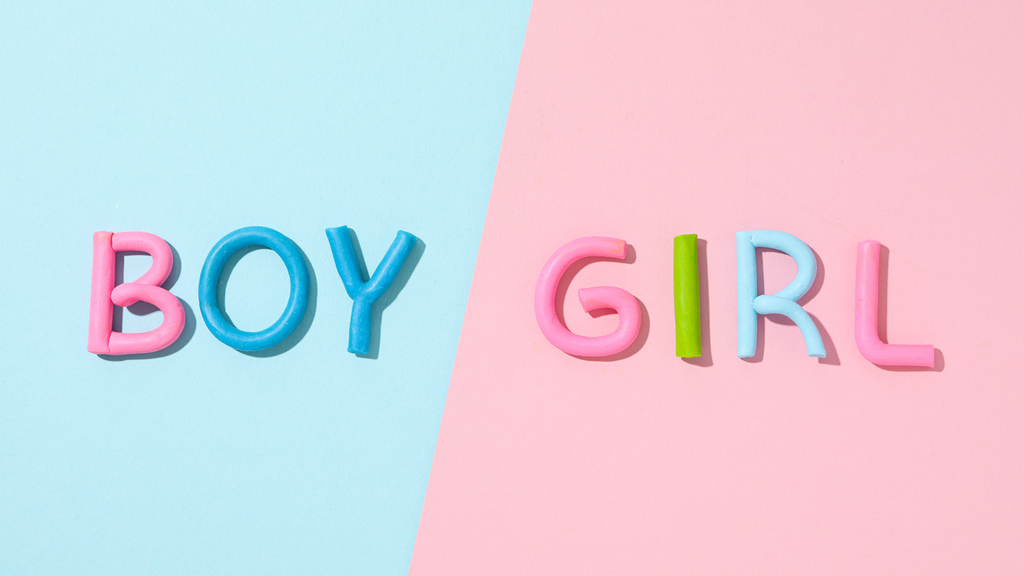
A Fun Guide to the Chinese Gender Prediction Chart for Ex...
Expecting a baby? Congratulations! One of the most exciting parts of pregnancy is wondering whether you'll have a boy or a girl. While ultrasounds can give you a medical answer, exploring old traditions and myths is sometimes fun. Enter the Chinese gender prediction chart! This ancient method is believed to predict your baby's gender based on your lunar age and the month of conception. Curious to know more? Let's dive into this fun and fascinating tradition!
What Is the Chinese Gender Prediction Chart?
The Chinese prediction chart is an old tradition, believed to be over 700 years old! According to legend, it was found in an ancient royal tomb and was once used by Chinese emperors to predict their baby's gender.
It works by looking at the mom's lunar age and the month she conceived to guess if she's having a boy or a girl.
There's no science behind it, but many parents love using it just for fun while waiting for their official ultrasound!
How Does the Chinese Gender Prediction Chart Work?
It's pretty simple! The chart consists of two variables:
- The mother's lunar age at the time of conception.
- The lunar month when conception occurred.
You cross-reference these two numbers on the chart, and it supposedly reveals your baby's gender. Sounds easy, right? But before you use it, you need to make sure you're using the correct lunar calculations. Let's go over how to do that.
How to Calculate Your Lunar Age & Conception Month
The tricky part about using the Chinese gender prediction chart is converting your age and conception month into the Chinese lunar calendar. Here's how:
Find Your Lunar Age
- The Chinese calendar works differently from the Gregorian calendar (the one we use daily). In Chinese tradition, a baby is already one year old at birth because they count the time spent in the womb.
- To find your lunar age, add one or two years to your current age, depending on when you were born. If you were born before the Chinese New Year, add two years. If you were born after, add one year.
Determine the Lunar Conception Month
- Use a Chinese lunar calendar converter (available online) to find out the lunar month when you conceived.
Once you have both numbers, match them on the Chinese gender prediction chart and see if you're having a little prince or princess!
Calculate Using Chinese Gender Predictor
Testing the Accuracy: Does It Really Work?
Now, the big question is, how accurate is the Chinese gender prediction chart? Some people swear by it, saying it was spot on for them, while others find it to be pure guesswork.
- Some studies suggest that the chart has a 50% accuracy rate, which makes sense because it's essentially a coin flip.
- Many parents use it just for fun, without relying on it for serious gender prediction.
- It has no scientific backing, so if you're looking for a more reliable way to determine gender, an ultrasound at 18-20 weeks is your best bet.
Still, it's an entertaining way to guess your baby's gender while you wait for the official confirmation!
Chinese Gender Prediction vs. Other Gender Myths
The Chinese gender prediction chart isn't the only old wives' tale about baby gender. Here are a few other fun myths:
-
The Ring Test:
Tie a ring to a string and dangle it over your belly. If it swings in circles, it's a girl. If it swings back and forth, it's a boy. -
Cravings:
Sweet cravings? Some say that means a girl. Craving salty or sour? That might mean a boy. -
Morning Sickness:
Severe nausea? Many believe that's a sign you're carrying a girl. Less sickness? A boy might be on the way.
None of these have scientific proof, but they make pregnancy even more exciting!
Also Read: Old Wives’ Tales for Baby Gender Predictions
Should You Try the Chinese Gender Prediction Chart?
Absolutely! As long as you take it with a grain of salt and see it as a fun activity rather than a medical tool. Many parents enjoy using it as a bonding experience with their families, making guesses and having a laugh about the results.
If you try it, remember to share your results and see if it matches your ultrasound later. Whether it's right or wrong, it's all part of the magical journey of pregnancy.
Conclusion
Pregnancy is full of surprises, and guessing your baby’s gender is one of the most enjoyable parts. The Chinese gender prediction chart is a fun, centuries-old tradition that can add a little extra excitement to your journey. While it's not scientifically proven, it's a great way to pass the time while you wait for the real answer. Baby Forest has a Chinese gender prediction calculator, you can use to have some fun during your pregnancy.
So, why not give it a shot? Whether you're team pink or team blue, the most important thing is a happy and healthy baby. Enjoy the adventure!
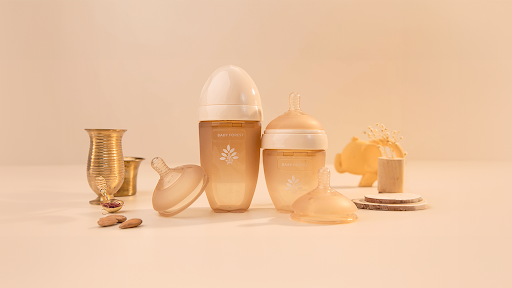
How to Choose Right Feeding Bottle: A Step-by-Step Guide
Feeding your baby is more than just providing nutrition; it's a ritual of connection, a moment of comfort and care. It's a moment when tiny hands grasp your finger, eyes lock with yours, and a deep sense of love washes over you. Elevate this precious experience with a thoughtfully designed feeding bottle that supports both your baby's needs and your parenting journey. Embrace a feeding experience that nurtures your little one's body and also the beautiful bond you share.
Feeding and Its Importance

1. Nutritional Needs for Growth and Development
- Feeding is important to ensure that babies get all the nutrients and vitamins for their growth and overall development.
- During the first six months, a baby relies entirely on milk for his nutritional needs,whether it is breastfeeding, formula feeding, or a combination of both.
- Proper feeding provides key nutrients like protein, fats, and vitamins and helps build strong immunity and brain development.
- When choosing the best baby bottles, make sure they provide comfort, safety, and the right milk flow to support these needs.
2. Bonding Between Parents and Baby
- Feeding also helps in building a bond between parents and their baby.
- Feeding helps strengthen the emotional connection between parent and child.
- The close contact during feeding helps promote a sense of security for the baby.
- Breastfeeding is beneficial for mothers as it releases oxytocin, a hormone that promotes bonding with the baby and aids in postpartum recovery.
- The best bottles for newborns often replicate this natural closeness through design that mimics breastfeeding.
3. Challenges in Feeding
Every baby and every mother is different, and their journey is unique.
- Some mothers may face challenges such as latch issues, milk supply problems, or allergies.
- In such cases, feeding bottle use becomes an alternative method to ensure that the baby receives adequate nutrition.
- The best breastfeeding bottles can help bridge the gap for mothers who need to switch between breastfeeding and bottle feeding.
How to Select the Best Feeding Bottle?

Today, when the market is flooded with numerous options. Making the right choice for your baby can be difficult. Here is a list of things you can look for while opting for a feeding bottle.
1. Material and Safety
The first thing you need to know is the material of the feeding bottle you are purchasing for your baby. There are different types of bottles available in markets, such as plastic, glass, and silicone bottles.
- Plastic bottles are cheaper in comparison to other bottles, but they can harm your child's health directly. These bottles contain toxic materials that may leach into the stored liquid and pass into the baby’s body.
- Glass bottles require good maintenance, but are very easy to clean and sterilize. The only safety concern is that they can break easily.
- Silicone bottles are best in terms of quality, and there are no safety concerns even in long-term usage.
2. Nipple Design and Flow
Another important element of a feeding bottle is the nipple since your baby will be sucking on it, therefore it has to be of the finest quality.
- Ensure it has a design that helps with regular milk according to the baby’s needs and capacity.
- A good quality silicone nipple that mimics breastfeeding is very popular these days since these are best for newborns and help them adapt to feeding with the least amount of effort.
- You can find different bottle sizes and nipple designs for your baby’s varied feeding needs at different ages, which means that as the baby grows, the milk flow will automatically increase without causing any discomfort.
- For young babies, slow-flow bottles are recommended to control the intake and reduce the risk of choking.
3. Anti-colic Features
Another common problem that parents face with bottle feeding is colic pain.
- The air that the baby swallows while feeding can cause abdominal pain.
- With modern designs, many feeding bottles are equipped with anti-colic vents.
- Anti-colic vents help reduce the intake of air during feeding.
- This feature helps prevent gas, bloating, and colic in babies.
- The best bottles for newborns often feature advanced vent systems to make feeding easier and more comfortable.
4. Ease of Cleaning
- Opt for bottles with wide necks or simple designs that are easy to clean.
- Look for bottles that are heat resistant, and can be sterilised.
- Look for bottles that are microwave-safe.
- The best breastfeeding bottles make cleaning less time-consuming with features like detachable parts and wide openings.
Why choose the Laad Pyaar Feeding Bottle

When it comes to nurturing your little one, every detail matters. That’s why Baby Forest brings you the Laad Pyaar baby feeding bottle, designed with the care and innovation to ensure a safe, comfortable, and natural feeding experience for your baby. This is a combination of functionality with thoughtful design. This best baby bottle offers features that set it apart in the world of baby care products.
Designed for Every Baby
The Laad Pyaar Baby feeding bottle comes in two sizes to cater to your baby’s growing needs.
- For newborns aged 0-6 months, the 150ml variant provides the perfect capacity for their small appetites.
- For babies aged 6 months and older, the 260 ml variant is ideal, offering a generous size for their increasing feeding requirements.
- With two flow options, slow for younger infants and medium for older babies, the bottle adapts seamlessly to your child’s development stage.
- Slow flow bottles are especially ideal for younger babies, helping them suckle at a natural pace without overwhelm.
A Natural Feeding Experience
- The laad pyaar baby feeding bottle mimics the natural feel and movement of breastfeeding.
- The soft, skin-like texture of the bottle and its uniquely designed nipple provide a breastfeeding-like experience, ensuring an easy transition for your baby.
- Making it an excellent choice for moms who want to combine breastfeeding with bottle feeding without causing nipple confusion.
Prevents Colic and Fuss
Colic and gas can cause discomfort for babies and sleepless nights for parents. The Laad Pyaar baby feeding bottle has
- Dual anti-colic vents, which minimize air intake during feeding, reducing the chances of gas and fussiness.
- The innovative nipple design ensures a steady flow of milk, preventing overfeeding and promoting a comfortable feeding experience for your baby.
Convenience/Cleaning

Cleaning baby bottles can be a challenging task, but the Laad Pyaar baby feeding bottles simplify the process
- It has an ultra-wide neck design. This unique feature allows an effortless cleaning by hand, ensuring hygiene without the hassle.
- This bottle is made from FDA-approved food-grade material, which is non-toxic, and durable.
- Heat-resistant up to 180 °C, making it ideal for microwaves, sterilizers, and boiling water.
Baby Feeding Chart
While bottle feeding, understanding your baby’s changing needs is important. Here’s a helpful guide based on your baby’s age.
| Age ( Months ) | Quantity ( ml Per Feeding) | Hours |
|---|---|---|
| 0 - 1 Months | Start with 30 ml Milk | Every 2-3 Hours |
| 1 - 3 Months | 90 - 120 ml Milk | Every 2-3 Hours |
| 3 - 6 Months | 120 - 150 ml Milk | Every 3-4 hours |
| 6 - 12 Months | 120 - 240 ml Milk (add 2 tablespoons of solids per meal) | Every 3-4 hours |
| 12 - 24 Months | 180 - 240 ml Milk (Supplemented with Solid) | Every 4-6 hours |
Always use baby feeding bottles according to your baby’s age and feeding stage. For newborns, using smaller bottles with slow-flow nipples works best. As your baby grows,switch to larger bottles and faster flow nipples to match their feeding pace.
Also Read: Baby Feeding Chart

Maintenance and Replacement
Proper care and timely replacement of baby feeding bottles are essential to ensure your baby’s safety and hygiene.
- Regular use and sterilization can cause wear and tear over time.
- Check the bottle, nipple, and cap regularly for cracks or any signs of damage.
When to replace the bottle and the nipple
- For the bottle nipple, you can change your bottle nipple every 3 months or sooner if you notice signs of wear and tear or a change in flow rate.
- For the bottle, you can replace the bottle every 6 months or when there are visible cracks, or an odour despite thorough cleaning.
Conclusion
Feeding is not just about nourishment; it’s about connection, security, and trust. Choosing the right feeding solution ensures that your little one gets the care they deserve, without unnecessary discomfort. A well-designed feeding bottle can make all the difference, easing transitions, preventing colic, and making feeding a joyful, stress-free experience.
That’s why thoughtful choices, like selecting a safe, high-quality, and baby-friendly bottle,matter. Products like Laad Pyaar by Baby Forest bring innovation and care together,ensuring that every feeding moment is as natural and comforting as a parent’s embrace.

Baby Names Inspired by Bollywood Superstars & Movie Chara...
Bollywood is more than just movies—it's a feeling, a part of our culture, and, let's be honest, a huge influence on everything from fashion to, yes, baby names! There's something magical about Bollywood baby names—they have a perfect mix of tradition, modern flair, and personality.
Whether you're a die-hard Bollywood fan or just love the idea of a name with a little star power, we've got you covered. From iconic movie characters to real-life superstars, let's dive into some adorable Bollywood baby names that might just be the perfect fit for your little one!
Adorable Baby Names Inspired by Bollywood Superstars & Movie Characters
For Baby Boys:
- Ranbir – This name has become popular thanks to Ranbir Kapoor. It means "brave warrior" and is a great choice for a strong and charming baby boy.
- Aryan – A stylish and popular name, it has been associated with many Bollywood stars, including Shah Rukh Khan's son. It means "noble" and "honourable."
- Raj – Inspired by the iconic character played by Shah Rukh Khan in Dilwale Dulhania Le Jayenge, Raj means "king" and remains a timeless favourite.
- Kabir – A powerful and meaningful name, Kabir was also the name of Hrithik Roshan's stylish character in War. It means "great" and "leader."
- Shah – Inspired by Shah Rukh Khan, this name signifies royalty and leadership.
- Irfan – Paying tribute to the legendary actor Irrfan Khan, this name means "knowledge" and "wisdom."
- Siddharth – Associated with Siddharth Malhotra, it means "one who has attained enlightenment."
- Dev – Short, strong, and classy, Dev has been a favourite in Bollywood, from Dev Anand to recent movie characters. It means "divine."
- Yash – Inspired by the famous filmmaker Yash Chopra and the character Yash in Kabhi Khushi Kabhie Gham, it means "glory" and "success."
- John – Inspired by John Abraham, this name means "graced by God."
You Can Also Read - Top 200 Unique Indian Hindu Baby Boy Names and Their Meanings
For Baby Girls:
- Aaradhya – Inspired by Aaradhya Bachchan, the daughter of Aishwarya Rai and Abhishek Bachchan, this name means "devoted."
- Alia – A modern and stylish name made famous by Alia Bhatt. It means "exalted" and "noble."
- Madhuri – Inspired by the graceful Madhuri Dixit, this name means "sweetness" and "charm."
- Rani – A tribute to Rani Mukerji and the unforgettable character Rani from Queen, it means "queen" and is perfect for your little princess.
- Suhana – Inspired by Suhana Khan, daughter of Shah Rukh Khan, this name means "beautiful."
- Katrina – If you love the elegance of Katrina Kaif, this name is a wonderful choice. It means "pure."
- Anushka – A lovely name that means "grace" and "kindness," associated with actress Anushka Sharma.
- Zoya – Inspired by the lead character in Zindagi Na Milegi Dobara and also by director Zoya Akhtar, this name means "alive" and "full of life."
- Deepika – Paying tribute to Deepika Padukone, this name means "little light" or "lamp."
- Pooja – Inspired by the iconic character Poo from Kabhi Khushi Kabhie Gham, this name means "worship."
You Can Also Read - 150 Unique Indian Baby Girl Names with Meanings
Conclusion
Choosing a name for your baby is such a beautiful journey, and Bollywood baby names can add that extra sparkle of glamour and meaning to it! Whether you love the timeless names of legendary actors or are inspired by the charm of modern movie characters, there's a perfect name out there just waiting for your little superstar.
At the end of the day, no matter which name you choose, what truly matters is the love, joy, and magic your baby brings into your life. So, take your time, find a name that feels just right, and let your little one shine like a true Bollywood star!
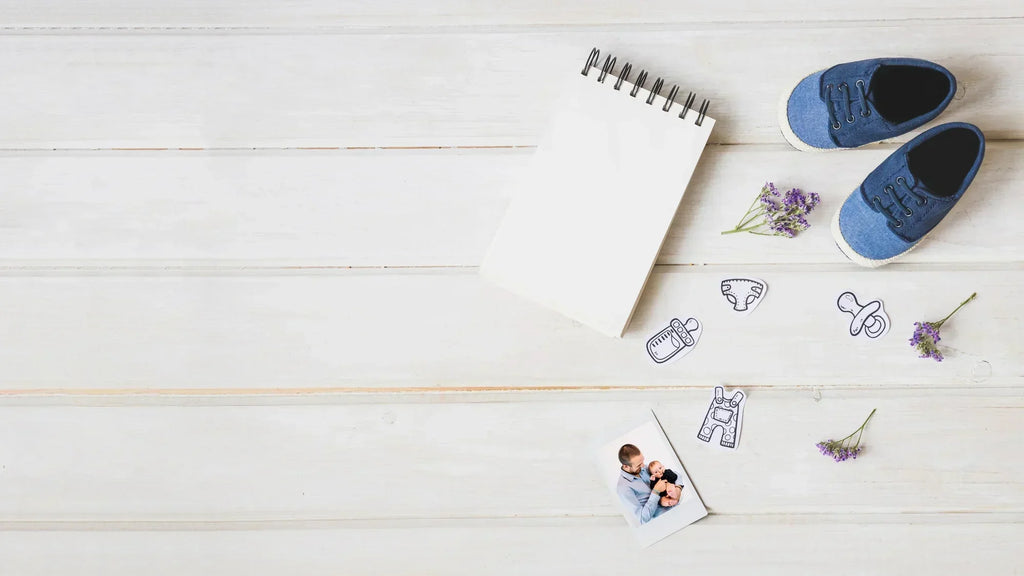
Adorable Baby Names That Start with A
Choosing a name for your baby is such a fun and exciting journey! It's not just a word—it's a piece of their identity, a story waiting to be told, and maybe even a legacy in the making. If you're on the hunt for a name that's unique, meaningful, and starts with the letter A, you're in the right place!
There's something special about names that begin with the letter A—they carry a timeless charm and are often linked to qualities like strength, leadership, and creativity. Whether you're drawn to classic names or something fresh and modern, we've gathered some of the most adorable baby names, starting with letter A, to help you find the perfect fit for your little one.
Baby Names Starting with A
Here's a list of some beautiful Indian baby names starting with the letter A. These names are trending in 2025 and hold deep meanings, making them perfect for your baby boy or girl.
50 Baby Boy Names Starting with A
Here's the list of 50 Baby Boy Names Starting with A converted into a clean table format:
| Name | Meaning |
|---|---|
| Aadesh | Command, message |
| Aadi | First, beginning, Lord Shiva |
| Aadit | Peak, limitless |
| Aaditya | Sun God |
| Aahan | First ray of sunlight |
| Aakarsh | Attraction |
| Aakash | Sky |
| Aalok | Light, brightness |
| Aarav | Peaceful, wisdom |
| Aarish | First ray of sun |
| Aarit | One who seeks the right direction |
| Aarush | First ray of sun, calm |
| Abhay | Fearless |
| Abhinav | Innovative, new |
| Abhiraaj | King, fearless ruler |
| Abhishant | Peace-loving, serene |
| Abhivadan | Greeting, salutation |
| Achintya | Beyond comprehension |
| Adarsh | Ideal, perfection |
| Adhrit | Lord Vishnu, who supports everything |
| Aditya | Sun, brightness |
| Advay | Unique, united |
| Agastya | Name of a sage, one who humbles mountains |
| Agnivesh | Bright as fire |
| Ahaan | Morning glory, sunrise |
| Ahan | Dawn, sunrise |
| Ainesh | Sun’s glory |
| Ajay | Unconquered, victorious |
| Akashdeep | Sky light |
| Akhil | Complete, whole |
| Akshay | Eternal, indestructible |
| Amay | Lord Ganesha, boundless |
| Ambarish | King of the sky, Lord Vishnu |
| Amit | Infinite, boundless |
| Amogh | Unfailing, Lord Ganesha |
| Anay | Lord Vishnu, without a leader |
| Anirudh | Boundless, grandson of Lord Krishna |
| Anish | Supreme, Lord Vishnu |
| Anshul | Radiant, bright |
| Anvit | Leader, followed by many |
| Apurva | Unique, one of a kind |
| Arav | Peaceful, calm |
| Arhan | Ruler, respected |
| Arijit | Victorious over enemies |
| Arjun | Bright, shining, name of a Pandava prince |
| Arnav | Ocean, vast |
| Aryan | Noble, warrior |
| Ashwin | Light, a star |
| Atulya | Incomparable, unique |
| Avyan | Perfect, Lord Vishnu |
You Can Also Read - Top 200 Unique Indian Hindu Baby Boy Names and Their Meanings
50 Baby Girl Names Starting with A
Choosing a name for your baby girl is a joyous and significant decision. Combining modern appeal with cultural richness, here are 100 Indian baby girl names that blend contemporary charm with traditional elegance:
| Name | Meaning |
|---|---|
| Aadhira | Moon |
| Aadhya | First power, Goddess Durga |
| Aahana | First rays of the sun |
| Aakanksha | Desire, wish |
| Aalaya | Home, refuge |
| Aaradhya | Worshipped, revered |
| Aarini | Adventurous, active |
| Aarohi | A musical tune |
| Aarushi | First ray of the sun |
| Aashi | Smile, joy |
| Aashika | Lovable, beloved |
| Aashita | One who is hopeful |
| Aashni | Goddess Lakshmi, lightening |
| Aastha | Faith, devotion |
| Aayesha | Life, alive |
| Abha | Glow, splendor |
| Abhilasha | Aspiration, desire |
| Adhira | Restless, strong |
| Adhya | Goddess Durga, beginning |
| Advika | Unique, matchless |
| Ahana | Inner light, sunrise |
| Ahilya | Sacred, pure |
| Aishani | Goddess Durga |
| Akanksha | Wish, desire |
| Akira | Graceful strength |
| Alankrita | Decorated, adorned |
| Alina | Noble, beautiful |
| Amaira | Forever beautiful |
| Amara | Immortal, eternal |
| Amaya | Night rain, boundless |
| Ambika | Goddess Durga, mother |
| Amisha | Honest, beautiful |
| Anagha | Sinless, pure |
| Anahita | Graceful, pure |
| Anaisha | Special, unique |
| Ananya | Unique, without equal |
| Anaya | Caring, concern |
| Anika | Graceful, brilliant |
| Anjali | Offering, tribute |
| Anvika | Powerful, complete |
| Anvitha | Goddess Durga, understood |
| Aparna | Goddess Parvati |
| Aradhana | Worship, devotion |
| Aria | Melody, noble |
| Arpita | Dedicated, surrendered |
| Arya | Noble, pure |
| Ashita | River Yamuna, one without limits |
| Athira | Prayer, quick |
| Avani | Earth, nature |
| Avika | Sunrays, earth |
You Can Also Read - 150 Unique Indian Baby Girl Names with Meanings
Conclusion
Whether you’re drawn to a name with deep cultural roots or something fresh and unique, this list has a little bit of everything. Say the names out loud, imagine your little one growing into them, and trust your instincts. After all, picking the perfect name is one of the very first and most beautiful gifts you'll give your baby!

What is the Hamburger Sign in Ultrasound? A Simple Guide ...
Finding out your baby’s gender is one of the most exciting moments in pregnancy! Some parents love the surprise, while others can't wait to know if it’s a boy or a girl. You might hear about the hamburger sign ultrasound if you're eager to find out. But what does that mean? And how accurate is it? Let's keep it simple and explain what to expect at your next scan!
What Is the Hamburger Sign in Ultrasound?
The hamburger sign ultrasound is a way doctors check if a baby is a girl during a scan. It gets its name because, on the ultrasound, the baby's genital area looks like a hamburger—three white lines representing the labia and clitoris (two buns and a patty in the middle!). This helps doctors tell the difference between a boy and a girl.
For a baby boy, the ultrasound shows a "turtle sign" instead, where the penis and scrotum are visible instead of the three lines. It may sound funny, but this method is a handy way to figure out your baby's gender early on!
When Can the Hamburger Sign Be Seen in an Ultrasound?
Expecting parents excited to know their baby's gender usually find out during the second trimester. The hamburger sign ultrasound is easiest to see between 18 and 22 weeks when the baby’s genitalia are fully developed and visible on the scan.
Sometimes, a skilled sonographer might spot it as early as 14 weeks, but early gender predictions aren't always accurate. That's why most doctors wait until at least 18 weeks to give a more reliable answer.
You Must Read: Chinese Gender Predictor
How Sonographers Use the Hamburger Sign to Identify a Baby Girl
During an ultrasound, the sonographer carefully checks the baby's lower body to see if they can spot the hamburger sign ultrasound. The baby’s position is important—if they're in the right spot, the technician looks for the three white lines that indicate a baby girl.
But sometimes, babies don't cooperate! If the view isn't clear, the technician might ask you to change positions, drink water, or walk around to help the baby move into a better spot.
How Accurate Is the Hamburger Sign in Predicting Gender?
The hamburger sign ultrasound is a common way to determine a baby’s gender, but it’s not always 100% accurate. The baby's position, ultrasound quality, and the technician's skill can all affect the results.
After 18 weeks, ultrasound gender predictions are about 95% accurate, but mistakes still happen. Sometimes, the umbilical cord or baby's fingers can look like genitalia, leading to confusion. That's why some parents confirm the results with other tests for extra certainty!
Other Methods Used to Determine Baby's Gender
Aside from the hamburger sign ultrasound, there are other ways doctors can determine a baby's gender:
- NIPT (Non-Invasive Prenatal Testing) is a blood test that can determine gender as early as 10 weeks with nearly 99% accuracy.
- Amniocentesis or CVS (Chorionic Villus Sampling) – These are invasive tests primarily used for genetic screening but can also reveal gender with certainty.
- 3D and 4D Ultrasounds – These advanced imaging techniques provide a clearer view of the baby's body, making gender identification easier.
- Old Wives' Tales and Gender Prediction Kits – While fun, these are not scientifically reliable. Methods like the shape of your belly or cravings are purely for entertainment!
Related Article: Old Wives’ Tales for Baby Gender Predictions
Conclusion
The hamburger sign ultrasound is a simple and helpful way for doctors to tell if you’re having a baby girl. While it's not 100% accurate, it gives a good early guess about your baby’s gender. If you're excited to find out, this method and other tests can give you a pretty clear idea.
But in the end, whether it's a boy or a girl, what truly matters is that your baby is healthy and growing well. Enjoy this special journey and have fun preparing for your little one's arrival!

When Will I Feel My Baby Move? Understanding Quickening i...
Pregnancy is full of magical moments, but one of the most exciting is feeling your baby move for the first time. That tiny flutter, called quickening in pregnancy, is your baby's way of letting you know they're growing and doing well.
But when will it happen? What does it feel like? And what if you haven’t felt anything yet? Let's break it down into simple terms, so you know what to expect from this special milestone.
What Is Quickening?
Quickening in pregnancy is when you first feel your baby move inside the womb. It's a special moment that makes everything feel real! At first, these movements may feel like soft flutters, tiny bubbles, or gentle taps. As your baby grows bigger and stronger, those little sensations will turn into kicks, stretches, and rolls that you can feel more clearly.
When Does Quickening Start?
Most moms-to-be feel quickening in pregnancy sometime between 16 to 22 weeks, but every pregnancy is different. If it's your first baby, you might not notice those tiny movements until around 20 weeks. If you've been pregnant before, you might recognize them as early as 16 weeks. Things like your baby's position, where your placenta is, and even your body type can affect when you feel those first little flutters.
What Do Baby Movements Feel Like?
At first, your baby's movements are very gentle. Many moms say they feel like:
- Butterfly wings fluttering inside.
- Tiny bubbles popping in your belly.
- A soft tapping sensation.
- Light muscle twitches, almost like a little flick.
As your baby gets bigger and stronger, those delicate flutters turn into kicks, jabs, and rolls. By the third trimester, you might even see your belly move as your little one stretches and wiggles around in their cosy home!
Where Will I Feel My Baby's First Movements?
In the beginning, you'll probably feel quickening in pregnancy in the lower part of your belly, below your belly button. It's easiest to notice when you're sitting still or lying down since there are fewer distractions. As your baby grows and your uterus expands, those movements will shift higher up and become stronger, making them even more exciting to feel!
Related Read - When Can You Feel Your Baby Kick?
How to Encourage Baby Movements
If you're eager to feel your baby move or want to bond with them, here are some gentle ways to encourage movement:
- Eat or drink something sweet – A small glass of juice or a snack can give your baby a little energy boost.
- Lie down and relax – Babies are often more active when you're still, so try lying on your side and paying close attention.
- Gently prod your belly – Sometimes, a little nudge can get your baby to respond with a kick or roll.
- Talk or play music – Babies can hear sounds from the womb, and some may react to familiar voices or soothing melodies.
What If I Don't Feel Quickening Yet?
If you haven't felt any movements by 22 weeks, don't panic! Every pregnancy is different. Some reasons for a delayed quickening in pregnancy include:
- Placenta positioning – If you have an anterior placenta (where the placenta is in front of the baby), it can cushion movements, making them harder to feel early on.
- Your body type – If you carry extra weight around your belly, movements might not be as obvious at first.
- First-time pregnancy – If this is your first pregnancy, it might take longer to recognize the feeling.
Always check with your doctor if you're concerned. They can use an ultrasound or a Doppler to reassure you that your baby is doing well.
How Baby Movements Change Throughout Pregnancy
Your baby's movements will evolve as they grow. Here's what to expect:
- Weeks 16-22: Gentle flutters and light taps.
- Weeks 23-27: Stronger kicks, stretches, and rolls.
- Weeks 28-32: Movements become more predictable, with noticeable patterns.
- Weeks 33-40: Less space means fewer big kicks but rolling and stretching sensations remain frequent.
By the third trimester, doctors recommend tracking your baby’s movements. A common guideline is to feel at least 10 movements in two hours. If you notice a decrease in activity, contact your doctor.
Conclusion
Feeling your baby move for the first time is a truly special moment, a little reminder that your baby is growing and thriving inside you. Quickening in pregnancy is different for every mom—some feel it early, while others may have to wait a bit longer. If you haven’t felt those first tiny flutters yet, don’t worry—it will happen soon! And when it does, enjoy every little kick, wiggle, and roll. Your baby is already connecting with you in the most beautiful way!

Top 200 Unique Indian Hindu Baby Boy Names and Their Mean...

Top 10 Fun and Easy Baby Shower Games for an Unforgettabl...
Planning a baby shower is always so exciting, isn't it? But you know what makes the celebration unforgettable? The baby shower games! These games are the perfect way to break the ice, get everyone laughing, and create beautiful memories for the parents-to-be and their guests. Whether throwing a cosy get-together with close friends or hosting a big, fun-filled party, adding a few baby shower games will keep the energy high and the smiles even bigger.
The best part? Baby shower games don't have to be complicated or over-the-top. Simple, fun, and easy-to-plan games are often the ones that bring the most joy. From guessing baby food flavours to testing everyone's knowledge about the mom-to-be, there are so many creative ways to keep your guests entertained.
In this article, we've rounded up 10 fun and easy baby shower games that will make your celebration a hit. So, get ready to create some heartwarming moments and loads of laughter!
Why Baby Shower Games Matter
You might be wondering — why play baby shower games in the first place? Well, think about it — a baby shower usually brings together friends, family, and sometimes even distant relatives who may not know each other very well. Baby shower games are the perfect icebreaker to get everyone chatting, laughing, and bonding, making the whole event feel warm and welcoming.
Plus, let's be honest — what's a celebration without a little fun? Playing baby shower games keeps the energy up, adds a burst of excitement, and creates unforgettable moments for everyone, especially the parents-to-be. Every laugh, every funny answer, and every creative game will turn into a cherished memory that they'll look back on fondly.
So, whether you're planning a small, cosy gathering or a big bash, including a few baby shower games is a sure-shot way to make the day extra special for everyone involved. After all, isn't that what celebrations are all about?
Top 10 Fun and Easy Baby Shower Games
Here are ten fantastic baby shower games that are easy to set up and guaranteed to make your event a hit.
1. Guess the Baby Food
- What you need: Several jars of baby food (different flavours), spoons, and blindfolds.
- How to play: Remove the labels from the baby food jars. Blindfold each participant, give them a spoonful of baby food, and have them guess the flavour. The person with the most correct guesses wins!
- Why it's fun: This game is hilarious because the flavours can surprise the players, leading to some priceless reactions.
2. Baby Bingo
- What you need: Printable baby bingo card pens.
- How to play: Create bingo cards with common baby shower gifts (like diapers, bibs, onesies, etc.). As the mom-to-be opens her gifts, guests mark off the items on their cards. The first person to get five in a row wins.
- Why it's fun: It keeps everyone engaged during the gift-opening time.
3. Don't Say Baby
- What you need: Clothespins or safety pins for each guest.
- How to play: As guests arrive, give them a pin and instruct them not to say the word "baby." If someone hears another guest say "baby," they can take their pin. The person with the most pins at the end wins.
- Why it's fun: It's hilarious to see how hard people try to avoid saying "baby” during a baby shower!
4. Who Knows Mommy Best?
- What you need: Printed question sheets about the mom-to-be (favourite food, craving, nursery theme, etc.)
- How to play: Guests answer questions about the mom-to-be. The one with the most correct answers wins.
- Why it's fun: This game is perfect for celebrating the mom-to-be while letting guests show off how well they know her.
5. Dirty Diaper Game
- What you need: Different chocolate bars, diapers, microwave.
- How to play: Melt different types of chocolate bars in diapers to resemble baby poop. Guests have to guess the type of chocolate by smelling or tasting it. The person with the most correct answers wins.
- Why it's fun: This game is grossly hilarious and gets everyone laughing.
6. Baby Name Race
- What you need: Paper, pens, and a timer.
- How to play: Set a timer for 2 minutes. Ask guests to write down as many baby names (starting with a specific letter) as possible within the time limit. The guest with the most names wins.
- Why it's fun: It’s fast-paced, competitive, and a great icebreaker.
7. Advice for Parents-to-Be
- What you need: Notecards and pens.
- How to play: Have guests write down their best parenting advice or funny parenting tips. Collect the cards and present them to the parents-to-be as a keepsake.
- Why it's fun: It’s heartfelt and meaningful, leaving the new parents with valuable advice and smiles.
8. Guess the Baby Bump Size
- What you need: String, scissors, and a marker.
- How to play: Ask each guest to cut a piece of string that they think will fit perfectly around the mum-to-be’s belly. Measure the belly, and the closest guess wins.
- Why it's fun: It’s light-hearted and creates some good laughs.
9. The Price is Right: Baby Edition
- What you need: Baby items (diapers, pacifiers, formula, etc.), paper, and pens.
- How to play: Display various baby items and have guests guess the price of each item. The person with the most accurate guesses wins.
- Why it's fun: This game is practical and entertaining!
10. Diaper Raffle
- What you need: Raffle tickets and diapers.
- How to play: Ask guests to bring a pack of diapers in exchange for a raffle ticket. Draw a winner during the shower.
- Why it's fun: It’s a clever way to help the parents-to-be stock up on diapers while making the event exciting.
Related Article: How to Plan the Perfect Baby Shower
Tips for Hosting a Fun Baby Shower Game Session
To make sure your baby shower games run smoothly, keep these tips in mind:
- Keep it short and sweet: Don't overwhelm guests with too many games. Aim for 3-5 fun games.
- Offer fun prizes: Small prizes like gift cards, candles, or cute home decor items make winning even more exciting.
- Mix it up:Plan a mix of high-energy and low-energy games to keep the mood balanced.
- Involve the mom-to-be: Make sure she is comfortable and engaged in the games.
- Have a game host: Designate someone to explain and facilitate the games.
Prizes and Party Favors for Game Winners
Everyone loves a good prize! Consider these simple and cute prize ideas for your baby shower games:
- Scented candles
- Mini photo frames
- Gift cards
- Personalized mugs
- Handmade soaps
For party favours, you could offer small keepsakes like:
- Mini succulent plants
- Customized cookies
- Scented sachets
- Thank you cards
Conclusion
Baby shower games are truly the heart of any fun and unforgettable celebration. They do more than just pass the time — they bring people together, spark laughter, and create beautiful memories for the mom-to-be. After all, what's better than sending the mom-to-be off with a heart full of love and a room full of laughter?

200 Unique Indian Baby Girl Names for Your Little Princess
Looking for the perfect name for your baby girl? Explore 200 unique Indian baby girl names, including beautiful, popular, Hindu, and cute girl names. Find meaningful and distinctive names inspired by tradition, mythology, and nature.

Godh Bharai vs. Baby Shower: Understanding the Difference...
A baby on the way is a reason to celebrate! Across the world, families honour this special time with ceremonies and traditions that shower the mom-to-be with love, blessings, and good wishes. In India, this celebration is known as Godh Bharai, while in Western cultures, it is called a Baby Shower.
Though both events share the same purpose; celebrating motherhood and the upcoming arrival of a baby. There are key differences in how they are performed, their customs, and what they symbolize.
If you’re planning a baby celebration, knowing these differences can help you decide which style suits you best—or even blend elements from both for a unique and memorable event!
The Cultural Significance
What is Godh Bharai?
Godh Bharai is a traditional Indian ceremony that celebrates pregnancy by blessing the mom-to-be with health, happiness, and a safe delivery. “Godh Bharai” literally means “filling the lap,” symbolizing the joy and prosperity coming her way.
This event is deeply rooted in Indian culture and is often filled with prayers, rituals, and gifts. It’s usually organized by the mother-in-law or female relatives, bringing together family and friends for a heartfelt and spiritual celebration.
What is a Baby Shower?
A Baby Shower is a Western tradition where friends and family gather to “shower” the expecting mother with gifts, love, and advice. Unlike Godh Bharai, which is more ritualistic, baby showers focus on fun games, themed decorations, and gift-giving.
The event is often hosted by a close friend or sibling and is a lighthearted gathering filled with laughter, good food, and joyful moments.
Differences in Timing
When is Godh Bharai Celebrated?
In India, Godh Bharai usually takes place in the seventh or eighth month of pregnancy, which is considered an auspicious time. Some families consult an astrologer or priest to choose a lucky date.
In certain regions of India, Godh Bharai is not performed for a first pregnancy but only for later pregnancies. The ceremony also varies by culture, with different customs followed in North and South India.
When is a Baby Shower Held?
A baby shower is typically held between the sixth and eighth month of pregnancy when the mother is well into her second trimester but still comfortable enough to enjoy the event. There are no religious restrictions, and the date is usually chosen based on convenience.
Traditional Rituals vs. Modern Fun
Godh Bharai:
Godh Bharai is a ritualistic event that begins with a puja or prayer ceremony. Elders in the family offer blessings to the expecting mother, applying kumkum and turmeric on her forehead as a sign of protection and prosperity. In many traditions, women from the family place sweets, fruits, and gifts in the mother’s lap, symbolizing abundance and good fortune. She is often dressed in traditional attire, such as a saree or lehenga, adorned with jewellery and bangles. Folk songs and traditional music add to the festive spirit, making the occasion deeply rooted in cultural heritage. Traditionally, Godh Bharai is a women-centric event, though modern families are increasingly including men in the celebrations.
Baby Shower:
A Baby Shower follows a more casual and lighthearted approach. Instead of rituals, the focus is on entertainment, games, and creating joyful memories. The event typically includes themed decorations, a gift-opening session, and engaging activities such as guessing the baby’s gender, baby bingo or writing advice for the new parents. The expecting mother is often dressed in a comfortable yet elegant outfit, and in some cases, gender-reveal cakes or party games add an extra element of excitement. Unlike Godh Bharai, a Baby Shower is generally open to both men and women, making it a more inclusive event.
Must Read: How to Plan the Perfect Baby Shower?
Food and Sweets: What’s Served?
Godh Bharai Traditional Foods
- A variety of homemade sweets such as laddoos, barfis, and kheer are prepared.
- Special pregnancy-friendly foods, such as coconut water, dry fruits, and nutritious snacks, are served.
- Many families prepare dishes based on the mum-to-be’s favourite cravings.
Baby Shower Treats
- A baby shower features a mix of light snacks, finger foods, and desserts like.
- Some families go for a buffet-style meal with a variety of international and homemade dishes.
- A baby-themed cake is often the centrepiece of the food table.
Gift-Giving Traditions
Godh Bharai Gifts
- In traditional Indian culture, gifts are often for the mother, not the baby. This is because some families believe buying baby items before birth is unlucky.
- Gifts include gold or silver jewellery, sarees, bangles, and organic baby care products.
- Blessings in the form of cash or symbolic items like coconut, fruits, and sacred threads are also common.
Baby Shower Gifts
- Baby showers focus more on gifts for the baby, including clothes, diapers, blankets, and toys.
- Some guests prefer practical gifts like baby monitors, strollers, and feeding accessories.
- Personalized gifts, such as customized baby books, keepsake journals, or name-engraved items, are also popular.
You can also read: 5 Best Baby Shower Gift Ideas for New Moms
Can You Blend Both Traditions?
Absolutely! Many modern families today combine elements of both celebrations for a unique event.
How to Mix Godh Bharai and a Baby Shower:
- Start with a puja to honour traditions and seek blessings.
- You can include games and fun activities to entertain your guests.
- Offer a mix of traditional and modern foods to cater to all preferences.
- Give meaningful gifts for both the mother and baby.
- You can also have both men and women attend for a more inclusive experience.
By blending these traditions, you get the best of both worlds—cultural richness and modern fun!
Conclusion
Choosing between the two comes down to what feels right for you. Some families love the traditional rituals and prayers of Godh Bharai, while others prefer the relaxed and cheerful vibe of a Baby Shower. The good news? You don’t have to pick just one! Many parents today blend both traditions, adding a touch of rituals while keeping things light and fun.
At the end of the day, what matters most is celebrating this special time in a way that makes you happy.
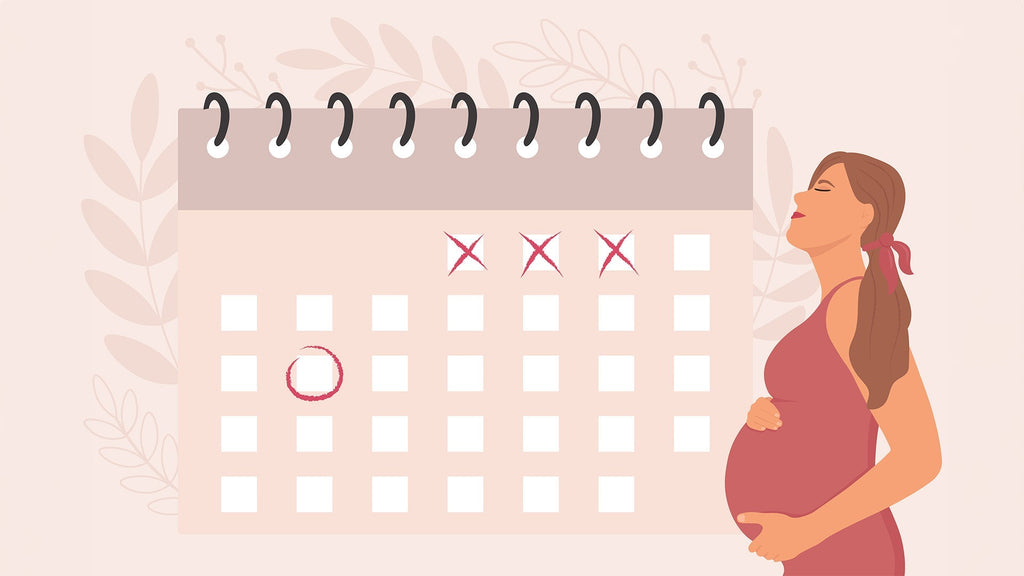
How to Use a Pregnancy Calculator to Track Your Pregnancy...
Finding out you're pregnant is such an exciting moment, full of joy—and, let’s face it, many questions! One of the first things you'll probably want to know is how far along you are and when your little one will make their grand entrance. That's where a pregnancy calculator comes in super handy. It's an easy-to-use tool that helps you track your pregnancy week by week so you can get a better sense of your journey. Let's break down how to use a pregnancy calculator and what you can expect as the weeks pass by!
What Is a Pregnancy Calculator?
A pregnancy calculator is a simple tool—whether digital or manual—that helps you estimate your due date and track your pregnancy progress. It works by using the first day of your last menstrual period (LMP) or the date of conception to calculate how many weeks pregnant you are. Since most pregnancies last about 40 weeks, the calculator gives you a general timeline of what to expect throughout your pregnancy.
The Baby Forest pregnancy calculator is a great way for expectant mothers to keep track of what's going on inside their bodies and how their babies are growing each week.
How to Use a Pregnancy Conception Calculator
Using the Baby Forest pregnancy calculator is super easy! Here's a quick step-by-step guide to help you out:

Know your dates –
The most common method is entering the first day of your last menstrual period (LMP). If you know your exact conception date, that works, too, but LMP tends to be more reliable.
Enter the information –
Simply input the dates into the calculator. If you're using an app or website, it'll do the math for you in seconds!
Get your estimated due date –
The pregnancy calculator will give you an estimated due date (EDD), which is when your baby is most likely to arrive. Just remember, only about 5% of babies are born exactly on their due date.
Track your pregnancy week by week –
The calculator will also show how far along you are and what changes to expect in both your body and your baby’s development.
That's it! With just a couple of clicks, you'll have an estimated timeline for your pregnancy journey.
Pregnancy Week-by-Week Tracking with a Calculator
One of the most exciting parts of pregnancy is watching your baby grow. A pregnancy calculator allows you to follow along week by week. Here's what you can expect:
- Weeks 1-4: Your baby is still a tiny bundle of cells, and implantation is happening. You might not even realize you're pregnant yet!
- Weeks 5-8: Major organs begin to develop, and you may start experiencing morning sickness and fatigue.
- Weeks 9-12: Your baby is about the size of a plum, and you might be able to hear the heartbeat at a doctor's visit.
- Weeks 13-16: Hello, second trimester! Your energy levels might return, and your baby is growing rapidly.
- Weeks 17-20: You may feel your baby's first kicks! An anatomy scan around week 20 gives a detailed look at their development.
- Weeks 21-24: Your baby is developing a sleep cycle, and their tiny features are becoming more defined.
- Weeks 25-28: The third trimester begins! Your baby is practicing breathing, and you might notice stronger movements.
- Weeks 29-32: Your baby is gaining weight fast, and you may start experiencing Braxton Hicks contractions.
- Weeks 33-36: Your baby is getting into position for birth, and you might feel more discomfort as your belly grows.
- Weeks 37-40: Almost there! Your baby is fully developed and could arrive anytime now.
A pregnancy calculator makes tracking these changes fun and informative, giving you a better idea of what's happening inside your body each week.
Additional Features: Some Pregnancy Calculators Offer
While basic pregnancy calculators give you an estimated due date and current week, some advanced calculators and apps offer additional features:
- Weight gain tracker: Helps you monitor healthy pregnancy weight gain.
- Baby size comparison: Tells you what fruit or vegetable your baby's size compares to each week.
- Symptom guide: Offers insights on common pregnancy symptoms based on your current week.
- Kick counter: Helps you track baby movements in the third trimester.
- Contraction timer: Useful for timing contractions as labour approaches.
These extra features can make pregnancy tracking more interactive and informative, helping you stay prepared every step of the way.
Benefits of Using a Pregnancy Calculator
There are so many reasons why a pregnancy calculator is a great tool for expectant parents:
- Easy tracking – It makes tracking your pregnancy a breeze, so you don't have to worry about complicated calculations.
- Better health monitoring – It keeps you aware of important pregnancy milestones and when to schedule check-ups.
- Emotional connection – Watching your baby grow week by week makes the whole experience feel more real and exciting!
- Reduces anxiety – Understanding what's normal each week helps ease your worries and boosts your confidence throughout your pregnancy journey.
When to Consult a Doctor for More Accurate Pregnancy Tracking
While pregnancy calculators are super helpful, they aren't a substitute for professional medical advice. You should reach out to your doctor if:
- You have irregular periods, which can make it tricky to calculate your due date accurately.
- You're unsure of your last menstrual period (LMP) or conception date.
- You have a history of pregnancy complications and need closer monitoring.
- Your doctor suggests an ultrasound for more precise dating.
Ultrasound scans, usually done around 8-12 weeks, provide the most accurate estimate of your baby's age and due date. Your doctor can also offer guidance on prenatal care and nutrition and address any concerns you may have along the way.
Conclusion
A pregnancy calculator is a simple yet powerful tool that helps you track your pregnancy week by week. It gives you a sneak peek into your baby's growth, helps you plan ahead, and adds a little extra excitement to your journey to parenthood. While it's a great starting point, always consult your doctor for the most accurate tracking and personalized advice.
Pregnancy is such a beautiful experience, with something new happening every week. Whether it's hearing your baby's first heartbeat, feeling that tiny kick, or preparing for delivery, a pregnancy calculator helps you stay informed and connected to your little one. So, go ahead—enter your details and start tracking this incredible journey!

How to Track Your Pregnancy Weight Gain with a Calculator
Pregnancy is such an exciting and beautiful journey, isn't it? There are so many changes happening, some that you can see coming and others that might take you by surprise. One of the biggest changes is how your body transforms – especially when it comes to weight gain.
It's totally normal but tracking it can help you stay on top of things and ensure you're on the right track. The good news is, it doesn't have to be stressful! With a pregnancy weight gain calculator, you can easily keep an eye on your progress and feel confident that everything is going as it should.
Why Pregnancy Weight Gain Matters
You might be asking yourself, "Why should I track my weight gain during pregnancy?" Well, it's not just about the number on the scale. It’s really about making sure your body is doing what it needs to support both your health and your growing baby.
Gaining the right amount of weight is key because it helps provide the energy and nutrients your baby needs to grow – like building the placenta and increasing blood volume. Plus, it ensures you have the right reserves for labor and recovery, so you're ready for the big day! It’s all about giving your baby the best start and taking care of yourself, too.
What Is a Pregnancy Weight Gain Calculator?
A pregnancy weight gain calculator is a super helpful tool to keep track of your weight during pregnancy. It looks at a few key things, like your pre-pregnancy weight, your body mass index (BMI), and how far along you are in your pregnancy.
That information gives you guidelines on how much weight you should gain during each trimester. The goal isn't to hit a specific number exactly but to stay within a healthy range that's just right for you and your baby. It's all about making sure you're on the right track without stressing over the details!
How to Use a Pregnancy Weight Gain Calculator
Using a Baby Forest pregnancy weight gain calculator is pretty simple – just enter a few details, and you're good to go! Here's a quick guide to walk you through it:

1. Enter Your Pre-Pregnancy Weight: The calculator will use this to figure out your BMI and set a baseline for how much weight you should gain.
2. Provide Your Height: This helps calculate your BMI more accurately and gives you a better idea of your healthy weight range.
3. Input Your Current Week of Pregnancy: The calculator adjusts for each trimester, so it'll give you a tailored suggestion based on where you are in your pregnancy.
Once you've entered this info, the calculator will show you a suggested weight gain range. For example, if your BMI is in the normal range, it might suggest gaining between 25-35 pounds. But keep in mind, this can vary depending on things like whether you're carrying twins or if you were overweight before pregnancy.
How Much Weight Should You Gain During Pregnancy?
The amount of weight you should gain during pregnancy really depends on a few factors, especially your starting weight. Here are some general guidelines to give you an idea:
- Underweight (BMI less than 18.5): If you were underweight before pregnancy, you might need to gain between 28 and 40 pounds.
- Healthy weight (BMI between 18.5 and 24.9): For those with a healthy weight, the recommended range is usually 25 to 35 pounds.
- Overweight (BMI between 25 and 29.9): If you were overweight before pregnancy, you might be advised to gain 15 to 25 pounds.
- Obese (BMI over 30): For those who were obese before pregnancy, a weight gain of 11 to 20 pounds might be recommended.
Remember, these are just general guidelines. Every pregnancy differs, and your doctor or healthcare provider will give you the best advice based on your unique health and circumstances.
Factors That Affect Pregnancy Weight Gain
It's important to remember that pregnancy weight gain isn't about sticking to a strict number from a calculator. Several things can influence how much weight you'll gain, including:
- Multiple Pregnancies: If you're carrying twins or multiples, you may need to gain more weight to support their growth and development.
- Activity Level: How active you were before and during pregnancy can affect how much weight you gain. Generally, staying active helps maintain a healthy weight, but it's important to balance activity with rest.
- Diet and Nutrition: A well-rounded, nutritious diet is key. Eating lots of fruits, veggies, lean proteins, and whole grains helps promote healthy weight gain for both you and your baby.
- Morning Sickness: Nausea and vomiting, especially in the first trimester, can make it hard to eat enough, which can affect weight gain.
- Health Conditions: If you have health conditions like gestational diabetes or thyroid disorders, they can influence weight gain and may require closer monitoring from your healthcare provider.
It’s all about balance, so focus on the bigger picture and work closely with your doctor to make sure everything stays on track.
Tips for Maintaining a Healthy Pregnancy Weight
Maintaining a healthy pregnancy weight doesn’t mean stressing over every pound. It's about being mindful and focusing on your overall well-being. Here are a few tips to help:
1. Eat Balanced Meals: Choose nutrient-rich foods like leafy greens, lean meats, and whole grains to nourish your body and baby.
2. Stay Hydrated: Drinking enough water is crucial for both you and your baby's health. Aim for at least 8-10 cups a day.
3. Listen to Your Body: It's normal to feel hungrier during pregnancy but try to focus on satisfying hunger with healthy foods rather than overeating.
4. Stay Active: Gentle exercises like walking, swimming, or prenatal yoga can help you stay healthy and feel great during pregnancy. Always check with your doctor before starting any exercise regimen.
5. Get Plenty of Rest: Adequate sleep helps your body recover and maintain energy levels, which can also contribute to maintaining a healthy weight.
When to Consult a Doctor About Pregnancy Weight Gain
If you notice a sudden increase or decrease in weight, it's important to reach out to your healthcare provider. Rapid weight gain, especially in the second or third trimester, could be a sign of conditions like pre-eclampsia, which requires attention.
On the flip side, not gaining enough weight might mean your baby isn't getting the nutrition they need, which is also something to address. Your doctor is the best person to offer guidance and ensure everything is progressing smoothly for both you and your little one. So, if anything feels off, don't hesitate to ask for help.
Conclusion
Tracking your pregnancy weight gain doesn't need to be a stressful experience. With the help of a pregnancy weight gain calculator, you can stay informed about your health and ensure you're supporting both yourself and your baby in the best possible way.
Just remember, every pregnancy is unique, so don't stress over the numbers – focus on eating well, staying active, and listening to your body. With the right approach, you can embrace this exciting time with confidence, knowing you're doing what's best for you and your growing little one.
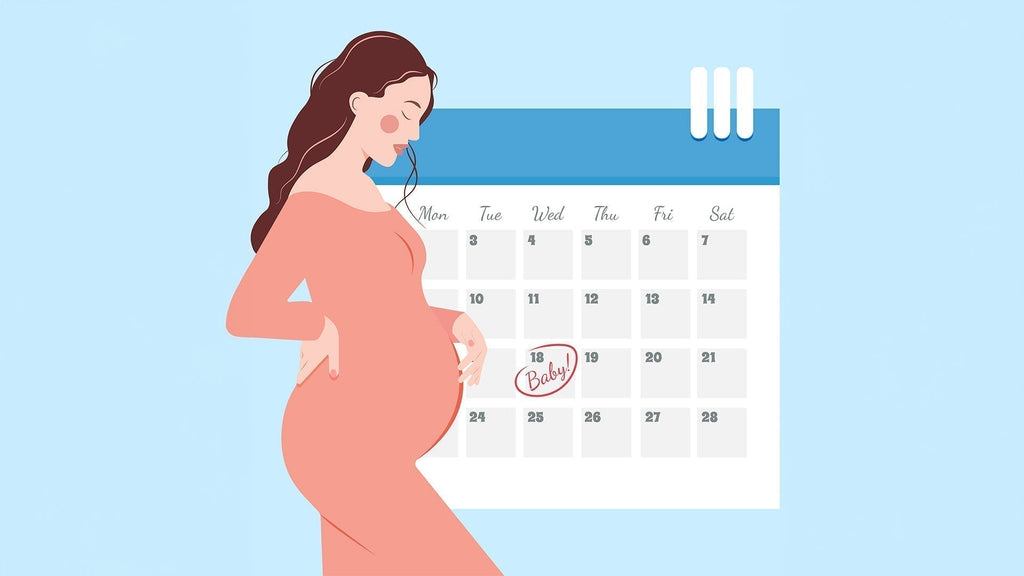
How to Use a Due Date Calculator: A Step-by-Step Guide
Pregnancy is such an exciting time—full of joy, surprises, and, yes, a few uncertainties along the way. One of the most common questions parents-to-be have is, "When will our baby arrive?" Knowing your due date is super important because it helps you plan for the big day. Luckily, thanks to due date calculators, figuring this out doesn't have to be complicated! In this guide, we'll show you exactly how to use one and help you understand your pregnancy timeline so you can feel a little more prepared for what's ahead.
What Is a Due Date Calculator?
A due date calculator is a handy tool that helps estimate when your little one might make their grand entrance. It works by using the first day of your last menstrual period (LMP) or your conception date, along with a formula that assumes a standard 28-day cycle. Keep in mind that it's not an exact science—your baby could arrive earlier or later than the estimate. But don't stress! The calculator gives you a solid starting point so you can start preparing for the big day.
Step-by-Step Guide to Using a Due Date Calculator
The Baby Forest Due Date Calculator can be incredibly helpful. Here’s how:

1. Know the Date of Your Last Period: First things first, you'll need to know the first day of your last menstrual period (LMP). This is usually how doctors estimate your due date. If you're not sure about your LMP, that's okay—just take your best guess, and the calculator can still give you a rough idea.
2. Enter the Information: Once you've got the date, simply plug it into a due date calculator. There are plenty of websites and apps that offer this feature, so you'll find one easily. Some calculators may also ask about the length of your menstrual cycle if it's different from the typical 28 days.
3. Hit Calculate: After entering all the details, hit the "Calculate" button. And just like that, you'll have an estimated due date!
4. Adjust for Cycle Length: If your cycle is longer or shorter than 28 days, the calculator will adjust your due date to reflect that. If you're using an app, it'll guide you through this step, so you don't have to worry about the details.
5. Stay Relaxed About the Result: Once the calculator gives you your due date, just remember—it's an estimate! Babies like to arrive on their own time, and most first-time pregnancies last between 38 and 42 weeks. So, don't stress if your little one comes a little earlier or later than expected.
How Accurate Is a Due Date Calculator?
While due date calculators are super helpful, they aren't perfect. The accuracy can depend on things like how regular your menstrual cycle is, how accurate the data you provide is, and when you ovulate. In fact, only about 5% of babies are born on their exact due date, so it's important not to get too attached to the date the calculator gives you.
These calculators typically assume you ovulate on day 14 of a standard 28-day cycle, but not everyone follows this pattern. If your cycle is shorter or longer than 28 days, the calculator will adjust your due date accordingly, but even then, it's still just an estimate. So, while it's a great tool, remember that your baby will arrive when they're ready!
Understanding Your Pregnancy Timeline Based on the Due Date
Once you have your due date, it's like a roadmap for your pregnancy journey. The typical 40 weeks are divided into three trimesters:
First Trimester (Weeks 1-12):
This is the very beginning, where your baby's organs are forming. You might feel super tired and even deal with morning sickness. It's not always the easiest, but it's a crucial time for your baby's growth.
Second Trimester (Weeks 13-26):
This is often referred to as the "honeymoon phase." You'll probably have more energy, and you may even start showing! Your baby's features will become more defined, and this is when many parents start to really feel that connection with their little ones.
Third Trimester (Weeks 27-40):
The final stretch! Your baby's organs are maturing, and they're getting ready for birth. As your baby grows, you might feel more uncomfortable, but hang in there—it won't be long until you meet your little one!
Knowing your due date makes it easier to track milestones and plan ahead for things like medical appointments, buying baby essentials, and getting your home ready for your new arrival. It helps you stay organized and calm so you're prepared when the big day finally arrives!
What to Do If Your Due Date Changes
Sometimes, your doctor might adjust your due date based on an ultrasound or other measurements. This usually happens if your baby's growth doesn't quite match the initial estimate. It's especially common if you're not sure about your LMP or if your cycles are irregular.
If your due date changes, don't stress! It doesn't mean anything is wrong—it just means you've got a more accurate idea of when your baby might arrive. Babies grow at their own pace, and doctors use these updates to make sure everything's on track. It's all part of the process, so take a deep breath and enjoy the journey!
When to Visit a Doctor for a More Accurate Due Date Estimate
If you're unsure about the details needed for your due date calculation or if your cycle is irregular, it's a great idea to check in with your doctor. They can help you get a more precise estimate, often using ultrasounds, which are a reliable way to date a pregnancy. Early ultrasounds, especially those done within the first 12 weeks, are particularly accurate when it comes to figuring out how far along you are.
Doctors can also keep an eye on your baby’s growth and adjust your due date if needed. So, if you're feeling uncertain or just want a clearer picture of your pregnancy timeline, don't hesitate to reach out to your doctor for some peace of mind. They're there to help guide you through every step of this exciting journey!
Conclusion
A due date calculator is a super handy tool that helps give you an idea of when your baby might make their debut. While it's not a guarantee, it's a great starting point for planning and preparing for your new arrival. Just keep in mind that babies don't always follow the schedule, so it's important to stay flexible and go with the flow.
Now that you know how to use a due date calculator, you can track your pregnancy journey with more confidence. It's an exciting time filled with growth and anticipation, so embrace each moment as you get ready to meet your little one. Your baby's arrival will be worth the wait!
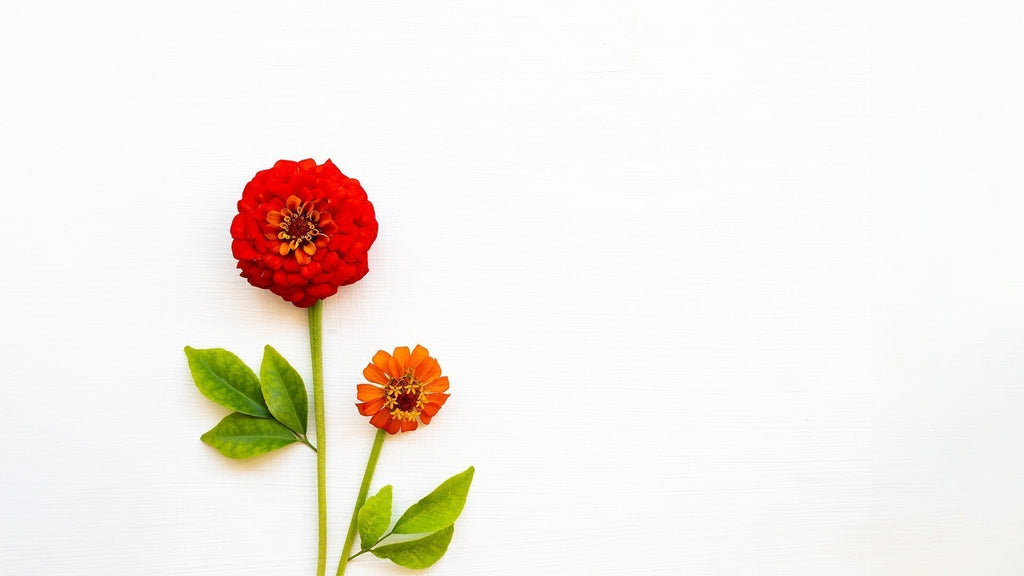
What Is a Birth Flower? Find the Perfect Flower for Your ...
Discover the meaning behind birth flowers and find the perfect bloom for your birth month. Learn how each flower symbolizes personality, traits, and more.
Becoming a parent is an exciting journey, full of sweet surprises and little discoveries. One charming tradition you might love is the idea of birth flowers. Like birthstones, these are unique flowers linked to each month of the year, each carrying its unique meaning. They're perfect for thoughtful gifts or adding a meaningful touch to your home decor. Let's explore what birth flowers are all about, why they're so special, and how you can bring their beauty into your life.
What Is a Birth Flower?
A birth flower is simply a flower that represents the month you were born. Like birthstones or astrological signs, these blooms are nature's symbolic gift for each month. Each one has its special meaning, making it a lovely way to celebrate someone's unique personality, milestones, or even the arrival of a new family member.
The tradition of birth flowers goes back centuries, with ties to different cultures worldwide. They're a timeless, heartwarming way to connect with nature and honour life's important moments.
Birth Flowers by Month and Their Meanings
Here's a fun little guide to birth flowers for each month and the beautiful meanings they carry:
January – Carnation & Snowdrop:
Carnations symbolize love and admiration, while snowdrops represent hope and fresh beginnings.
February – Violet & Primrose:
Violets represent loyalty and faithfulness, while primroses represent young love.
March – Daffodil:
These bright yellow blooms represent rebirth and new beginnings.
April – Daisy & Sweet Pea:
Daisies symbolize purity and innocence, while sweet peas represent blissful pleasure.
May – Lily of the Valley & Hawthorn:
Lilies of the valley stand for sweetness and humility, while hawthorn blooms symbolize hope.
June – Rose & Honeysuckle:
Roses are classic symbols of love, and honeysuckles represent strong bonds.
July – Larkspur & Water Lily:
Larkspur symbolizes positivity and dignity, while water lilies represent peace and enlightenment.
August – Gladiolus & Poppy:
Gladiolus stands for strength and integrity, and poppies symbolize remembrance.
September – Aster Morning Glory:
Asters represent wisdom and love, while morning glories symbolize affection.
October – Marigold Cosmos:
Marigolds are linked to warmth and creativity, and the cosmos represents harmony.
November – Chrysanthemum:
These blooms symbolize friendship, joy, and optimism.
December – Narcissus & Holly:
Narcissus represents hope and good wishes, while Holly symbolizes protection and domestic happiness.
How to Use Birth Flowers in Gifting and Decor
Birth flowers can bring a special touch to so many parts of life. Here are some fun and meaningful ways to incorporate them:
Gifts for New Parents:
Surprise new parents with a bouquet featuring the baby's birth flower—a thoughtful and personal gesture.
Related Article: 5 Mindful Gift Ideas for New Parents
Baby Showers:
Use birth flowers in table centrepieces or floral decorations to create a charming and memorable baby shower theme.
Related Article: How to Plan the Perfect Baby Shower?
Nursery Decor:
Personalize your baby's room with wall art or prints featuring their birth flower.
Personal Keepsakes:
Think of pressed flower frames, jewellery, or custom artwork featuring your little one's birth flower.
Family Traditions:
Start a garden filled with birth flowers for each family member—a living, blooming family history right in your backyard!
Cultural and Historical Significance of Birth Flowers
Birth flowers have fascinating cultural and historical roots. Back in Victorian times, flowers were a way to communicate unspoken messages through "floriography,” or the language of flowers. Imagine expressing love, friendship, or even secret feelings simply through blooms!
Different cultures also attach their meanings to flowers. For example, in Japanese culture, cherry blossoms symbolize the fleeting beauty of life—reminding us to cherish every moment.
Different cultures also attach their meanings to flowers. For example, in Japanese culture, cherry blossoms symbolize the fleeting beauty of life—reminding us to cherish every moment.
How to Care for Your Birth Flower
If you've got a garden—or even just a few pots on your balcony—growing your birth flower can be a rewarding experience. Here are some simple care tips to help you get started:
Know Your Bloom's Needs:
Check whether your birth flower prefers soaking up the sun or hanging out in the shade.
Water Wisely:
Most flowers love well-drained soil, so ensure their roots aren't in water.
Fertilize Occasionally:
Boost your plant's health with organic fertiliser occasionally.
Prune Regularly:
Deadhead those spent blooms to keep your plant vibrant and encourage new growth.
Protect from Pests:
Look for pests and try natural solutions to keep them at bay. And if gardening isn't your thing, that's okay! Simply enjoying fresh or dried versions of your birth flower can still brighten your space and bring a touch of meaning to your day.
Conclusion
Birth flowers are a lovely way to add a personal and meaningful touch to life’s special moments. Whether you're gifting a thoughtful bouquet, decorating your home with floral art, or starting a new family tradition, these beautiful blooms carry heartfelt messages of love, hope, and joy.
As you navigate the adventure of parenthood, finding small ways to celebrate and connect with nature can make the journey even more magical. Why not discover your family's birth flowers and let them bloom in your life—whether in your garden, on your walls, or simply in your heart?

How to Give a Safe and Gentle Sponge Bath to Your Baby
A simple guide for new parents on giving a baby a sponge bath. Learn the right techniques and what supplies you'll need. Start with confidence!
Bringing your newborn home is such a special moment, but let’s be real—it also comes with a lot of “Wait, am I doing this right?” moments. One of those? Keeping your little one clean. Since newborn skin is super delicate and the umbilical cord stump needs time to heal, a full bath isn’t the best idea just yet. That’s where a gentle sponge bath procedure comes in!
If you’re feeling a little unsure, don’t worry—you’re not alone. Giving your baby a sponge bath is easier than you think, and we’ve got all the tips to help you do it safely and comfortably.
When Does a Baby Need a Sponge Bath?
Newborns don’t need a bath every day—in fact, too much bathing can dry out their delicate skin. That’s why a sponge bath procedure is the way to go until the umbilical cord stump naturally falls off (which usually happens within two weeks). If your baby has been circumcised, sponge baths are also the safest option since they help keep the healing area clean and dry.
Of course, babies have a knack for making adorable messes—whether it’s a milk spill, a diaper blowout, or just an extra sweaty nap. In those cases, a quick sponge bath is a lifesaver for freshening them up without a full soak.
Essential Supplies for a Baby Sponge Bath
Before you start, gather everything you’ll need. Babies can get cold quickly, so having everything within reach ensures a smooth process.
Here’s what you’ll need:
- A soft washcloth or natural sponge
- A basin of warm water (not too hot—around 98°F or 37°C is ideal)
- Gentle, fragrance-free baby soap (optional)
- A clean, soft towel
- A fresh diaper and clean clothes
- Cotton balls or pads (for cleaning the eyes and face)
Once you have all the essentials ready, it’s time to start the sponge bath procedure step by step.
Related Read - Ultimate Baby Bathing Checklist
Step-by-Step Guide to Giving a Sponge Bath
1. Choose a Warm, Comfortable Spot
Pick a safe, warm place for the bath, like a changing table, a padded surface, or even a bed with a waterproof mat underneath. Keep the room temperature cozy (around 75°F) to prevent your baby from getting chilly.
2. Undress Your Baby, but Keep Them Wrapped
Babies can feel exposed and cold quickly, so keep them wrapped in a soft towel and uncover only the parts you’re washing.
3. Start with the Face
Dip a cotton ball in warm water (no soap needed) and gently wipe each eye from the inner to the outer corner. Use a fresh cotton ball for each eye. Then, use a soft washcloth to clean the rest of the face, paying attention to the folds around the nose and mouth.
4. Wash the Neck, Hands, and Arms
Gently wipe around the neck, behind the ears, and under the chin where milk tends to collect. Move on to the hands and arms, carefully cleaning between tiny fingers.
5. Clean the Chest and Back
Using a damp, warm washcloth with a tiny amount of baby soap (if needed), wipe down the chest and back. Avoid scrubbing—gentle strokes are enough.
6. Wipe the Legs and Feet
Babies love to kick, so their legs and feet can get surprisingly dirty. Clean between the toes and make sure to dry them well.
7. Clean the Diaper Area Last
Always wash the diaper area last to avoid spreading bacteria. For girls, wipe front to back. For boys, gently clean the genital area without pulling back the foreskin (if uncircumcised).
8. Dry and Dress Your Baby
Pat your baby dry immediately with a soft towel, making sure to dry any skin folds. Then, dress them in a clean diaper and warm, comfy clothes.
Tips for Keeping Your Baby Comfortable During a Sponge Bath
- Keep talking to them! Your voice soothes your baby and makes bath time feel safe and familiar.
- Use gentle strokes. No need to scrub—soft dabs and wipes are all it takes.
- Keep baths short. 5 to 10 minutes is plenty.
- Warm the towel beforehand. A pre-warmed towel makes drying time extra cozy.
- Moisturize if needed. If your baby has dry skin, use a natural, fragrance-free baby lotion after the bath.
Common Mistakes to Avoid
- Using too much soap. A little goes a long way! Too much can dry out your baby’s skin.
- Letting the baby get too cold. Always keep them wrapped and only expose the part you’re washing.
- Skipping the skin folds. Milk, sweat, and lint can hide in the folds of the neck, thighs, and armpits.
- Rushing the process. Take your time. Making bath time calm and soothing can turn it into a bonding moment.
Related Read - Baby's First Bath: A Step-by-Step Skincare Guide for Newborns
When to Transition to a Regular Bath
Once your baby’s umbilical cord stump has fallen off and any circumcision has healed, it’s time to move on to a real bath! This usually happens around two to three weeks after birth. When that moment comes, stick to the same gentle approach—warm water, soft strokes, and keeping bath time short and sweet.
Conclusion
Giving your newborn a sponge bath procedure doesn’t have to be stressful. In fact, it’s a beautiful chance to bond with your little one. Just keep things warm, be extra gentle, and enjoy these snuggly, peaceful moments. Before you know it, your tiny newborn will be splashing around in the tub, so soak up every second while they’re this little!

Fertility Yoga for Beginners: A Step-by-Step Guide
Trying to conceive can be an emotional rollercoaster. The waiting, the stress, the well-meaning (but sometimes overwhelming) advice—it's a lot. If you're looking for a natural way to support your fertility and bring some calm into the process, fertility yoga might be just what you need. It's a gentle, mindful practice that helps melt away stress, improves blood flow to your reproductive organs, and brings a sense of balance to your body and mind.
The best part? You don't need to be a yoga pro to start. Yoga for conceiving is all about simple, nurturing movements that make you feel good—physically and emotionally. This guide will walk you through the basics so you can step onto your mat with confidence and start your journey with ease.
How Yoga Supports Fertility
You might be wondering—how exactly does yoga help with fertility? The benefits go beyond just stretching and relaxation.
Reduces Stress:
Stress is a big factor in fertility struggles. Yoga helps calm the nervous system, reducing cortisol levels and promoting a state of relaxation that's essential for conception.
Improves Blood Circulation:
Certain poses enhance blood flow to the reproductive organs, helping to nourish and support them.
Balances Hormones:
By stimulating the endocrine system, yoga can help regulate hormones crucial for ovulation and overall reproductive health.
Strengthens the Pelvic Area:
Many yoga poses target the hips, pelvis, and lower abdomen, creating a strong and supportive foundation for pregnancy.
Encourages Mind-Body Connection:
Yoga teaches you to be more in tune with your body, making it easier to recognize your natural cycles and fertility signals.
Best Time to Start Fertility Yoga
The short answer? Anytime! There's no right or wrong time to start, but if you're actively trying to conceive, incorporating yoga for conceiving into your routine before ovulation can be extra beneficial.
If you're undergoing fertility treatments, it's always a good idea to check with your doctor about when and how to practice. Some women find that gentle yoga works well throughout their entire cycle, while others prefer to adjust the intensity based on how they're feeling. Listen to your body, take it slow, and let yoga support you every step of the way!
Related Read - About Beej Sanskar
Essential Tips for Beginners
Starting something new can feel intimidating, but don't worry. Here are a few tips to ease into fertility yoga:
Keep It Gentle:
Fertility yoga is all about relaxation and connection. Avoid intense, high-impact yoga styles.
Breathe Deeply
Focus on slow, deep breaths. This helps reduce stress and increases oxygen flow to your reproductive organs.
Listen to Your Body:
If a pose feels uncomfortable, skip it. Yoga should feel good, not forceful.
Create a Calm Space:
Find a quiet spot where you feel at ease. A soft mat, dim lighting, and relaxing music can set the mood.
Stay Consistent:
Like anything, consistency matters. Aim for at least 3-4 sessions a week to see benefits.
Step-by-Step Fertility Yoga Routine
Here's a simple routine to get you started. These poses are gentle, effective, and beginner-friendly.
1. Butterfly Pose (Baddha Konasana)
-
Sit on the floor with your spine tall.
-
Bring the soles of your feet together, letting your knees drop outward.
-
Hold your feet and gently press your knees toward the floor.
-
Stay here for 3-5 minutes, breathing deeply.
Why it helps: It opens up the hips and increases circulation to the pelvic area.
2. Legs Up the Wall (Viparita Karani)
-
Lie on your back and extend your legs up against a wall.
-
Relax your arms by your sides and breathe deeply.
-
Hold for 5-10 minutes.
Why it helps: Encourages blood flow to the reproductive organs and promotes relaxation.
3. Child's Pose (Balasana)
-
Kneel on the floor and sit back on your heels.
-
Extend your arms forward and rest your forehead on the mat.
-
Breathe deeply and stay here for 3 minutes.
Why it helps: It releases tension in the lower back and hips and reduces stress.
4. Bridge Pose (Setu Bandhasana)
-
Lie on your back with your knees bent and feet flat on the floor.
-
Press your feet into the mat and lift your hips up.
-
Hold for 30 seconds, then lower slowly.
Why it helps: Stimulates the pelvic region and balances hormones.
5. Seated Forward Bend (Paschimottanasana)
-
Sit with legs extended forward.
-
Reach for your toes, folding over your legs.
-
Hold for 3 minutes while breathing deeply.
Why it helps: It improves blood circulation to the uterus and relieves stress.
Additional Lifestyle Tips to Boost Fertility
Along with yoga for conceiving, a few lifestyle changes can further support your journey:
Eat a Balanced Diet:
Focus on whole, nutrient-rich foods like leafy greens, nuts, seeds, and lean proteins.
Stay Hydrated:
Proper hydration supports overall reproductive health.
Get Enough Sleep:
Aim for 7-9 hours of quality sleep to keep hormones balanced.
Reduce Caffeine and Alcohol:
Both can interfere with hormone regulation and ovulation.
Practice Mindfulness:
Meditation and breathing exercises can further reduce stress and improve emotional well-being.
Precautions and When to Consult a Doctor
Fertility yoga is generally safe, but tuning into your body is key. If you have a medical condition, have had recent surgery, or are undergoing fertility treatments, it's always best to check with your doctor before starting.
And remember—yoga for conceiving should feel good, not painful. If any pose feels uncomfortable or causes strain, don't push through it. Modify, take a break, or switch to a gentler pose. Your body knows best, so let it guide you!
Conclusion
Fertility yoga is more than just movement—it's a way to nurture your body, mind, and fertility all at once. It melts away stress, boosts blood flow to your reproductive organs, and creates a positive, welcoming space for new life to grow.
By making yoga for conceiving a part of your routine—alongside a healthy lifestyle—you're giving yourself the best possible chance to embrace this beautiful journey. So, roll out your mat, take a deep breath, and trust the process. Your body is working with you every step of the way!
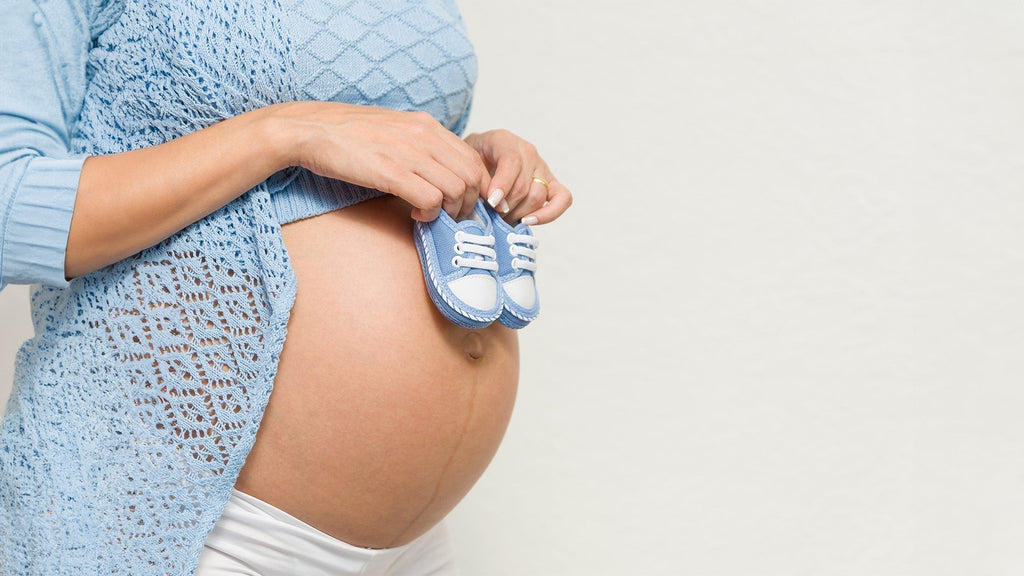
Gas Bubbles or Baby Kicks? How to Tell the Difference Dur...
Pregnancy is full of surprises! One moment, your belly feels quiet, and the next—there's a weird little flutter. Could it be your baby moving, or is it just gas? Every first-time mom wonders the same thing!
The early flutters of pregnancy can feel surprisingly similar to digestion-related movements, making it tricky to tell what's what. But don't worry—understanding the difference between gas bubbles and baby moving will help you connect with your little one and recognize key pregnancy milestones.
Let's break it down in a simple, no-stress way!
Understanding Quickening: The First Baby Movements
Quickening is that magical moment when you first feel your baby move—an exciting milestone that usually happens between 16 and 25 weeks of pregnancy. But here's the tricky part: those first little flutters can be super subtle and easy to mistake for something else.
At first, baby kicks might feel like tiny bubbles popping, a soft tickle, or even little muscle spasms. Some moms say it's like butterflies in their belly! But don’t worry—soon enough, those movements will get stronger and more distinct, making it much easier to tell when your little one is saying hello.
Related Read - When Can You Feel Your Baby Kick?
What Do Gas Bubbles Feel Like
Gas bubbles are totally normal during pregnancy (thanks, hormones!). Since digestion slows down, trapped air can create sensations that feel surprisingly like baby kicks. You might notice:
-
A rolling or gurgling feeling in your stomach
-
Quick, popping sensations that come and go
-
Pressure that shifts and disappears after passing gas
The key difference? Gas is often paired with bloating or bowel changes, while baby kicks become more rhythmic and responsive over time. If you’re unsure, try eating, resting, or gently poking your belly—your little one might just say hello!
Key Differences Between Gas Bubbles and Baby Kicks
So, how do you tell if it's gas or your baby making moves? Let's break it down!
Location Matters
Baby kicks usually happen lower in your belly, right where your uterus is growing. Gas bubbles can pop up anywhere in your stomach or intestines.
Pattern and Timing
Gas comes and goes randomly, often after meals. Baby movements tend to follow a pattern, especially as they get stronger over time.
Response to Touch
Try pressing gently on your belly—if you feel movement in response, it's likely your baby is saying hello! Gas won't react the same way.
Accompanying Symptoms
Feeling bloated, crampy, or the urge to pass gas? That's digestion, not your baby.
Consistency
Baby kicks become more predictable as pregnancy progresses, while gas is just... unpredictable.
Understanding the difference between gas bubbles and baby moving helps you relax and enjoy this special part of pregnancy!
When to Expect Baby Kicks
If you're a first-time mom, you'll probably start feeling those tiny kicks between 18-25 weeks. If you've been pregnant before, you might recognize them even earlier—sometimes around 16 weeks! But don't stress if you don't feel movement right away.
Things like placenta placement, baby's position, and even body shape can all affect when you first notice those little flutters. As your pregnancy moves along, those movements become stronger and more obvious. By the third trimester, get ready for jabs, rolls, and even little baby hiccups—it's all part of the magic!
How to Encourage Baby Kicks
Eager to feel those tiny feet in action? Try these fun little tricks to get your baby moving!
Grab a snack
A little fruit or juice can give your baby a mini sugar rush, making them more active.
Lie down and relax
Babies love to move when you're still, so try lying on your side and pay close attention.
Give a gentle nudge
A soft belly rub, or poke might just get a response!
Play some tunes
Your baby can hear sounds in the womb, and some even "dance" (okay, wiggle) to music or your voice.
Change positions
Adjusting how you sit or lie down might encourage movement—like helping them find their favourite cozy spot!
Savor these little moments—before you know it, those tiny flutters will turn into big, undeniable kicks!
When to Talk to Your Doctor
At first, baby movements can be all over the place, but by the third trimester, you'll start noticing a pattern. If you ever feel unsure, trust your instincts!
Call your doctor if:
-
You haven't felt any movement for 25 weeks.
-
Your baby's movements suddenly slow down or stop.
-
There's a significant decrease in activity after 28 weeks.
A quick check-up can bring peace of mind and make sure everything is going smoothly. When in doubt, reach out—it's always better to be safe!
Conclusion
Feeling movement inside your belly is pure magic! But in the early weeks, it's totally normal to wonder—is that a baby kick or just gas? The trick is to notice where you feel it, how often it happens, and if it responds to touch.
With time, you'll start recognizing your baby's little patterns and cherish these tiny moments of connection. Knowing the difference between gas bubbles and baby moving can ease worries and make pregnancy even more exciting. So, take a deep breath, trust your body, and enjoy this incredible journey!

How to Encourage Your Baby to Take Their First Steps
Watching your baby take their first steps is one of the most exciting moments as a parent. It's a memory you'll hold onto forever! But, as a new parent, you might ask yourself, when do babies start walking? Well, the timing can vary from baby to baby.
Knowing a bit about the typical development process and how to support your little one can help them confidently take those first steps. So, let's talk about how you can encourage your baby to walk and share some tips to make the journey smoother for both of you!
Understanding When Babies Typically Start Walking
Before we delve into the tips and tricks, let's answer a question many parents have: when do babies start walking? Generally, most babies take their first steps somewhere between 9 to 12 months. But here's the thing—some babies might walk earlier, while others take their time. It's all part of their unique development. Some little ones may even skip crawling entirely, while others might crawl for a few months before walking.
In the early months, your baby is busy learning to roll over, sit, and stand—these are all important building blocks for walking. As they approach their first birthday, you'll likely notice them more interested in standing and moving around. But hey, if your baby isn’t walking exactly on time, don't stress. They're doing just fine as long as they're hitting other milestones!
Signs Your Baby Is Ready to Start Walking
You might notice a few signs that indicate your baby is getting ready to take their first steps. Here are some common ones:
-
Pulling themselves up to stand:
If your baby is starting to pull themselves up on furniture or your legs, that's a great sign. It means they're building strength in their legs and core muscles. -
Cruising along furniture:
As your baby gains more confidence, they may begin to "cruise" or walk while holding onto furniture. This is a key step in the transition to walking independently. -
Standing for longer periods:
When your baby can stand without support, even for just a few seconds, it shows they're gaining balance and stability.
-
More interest in moving:
If your baby is eager to explore and tries to take steps while holding onto your hands, they are ready to start walking.
How to Encourage Your Baby to Walk
The best way to encourage your baby to walk is to create an environment where they can practice safely and comfortably. Here are some simple and effective ways to help them along the way:
-
Provide plenty of tummy time:
Tummy time is essential for building the muscles your baby needs to roll, crawl, and eventually walk. It helps strengthen their arms, shoulders, and neck, preparing them for more complex movements like standing and walking. -
Support them in standing:
Help your baby practice standing by holding their hands and guiding them to stand. Don't be afraid to let them bear some of their own weight, as this helps develop the leg muscles needed for walking. -
Encourage cruising:
Place toys or objects just out of reach on low furniture, encouraging your baby to cruise while holding onto the furniture. This helps them build balance and coordination. -
Create a safe walking space:
As your baby starts to take steps, make sure they have a safe environment to practice. Use soft rugs or mats and remove any sharp objects or obstacles that could cause accidents. -
Show them how it's done:
Babies love to imitate, so demonstrate walking by holding their hands and walking with them. You can also encourage them by showing excitement when they make even the smallest steps.
Building Physical Strength for Walking
To ensure your baby is physically ready for walking, focus on activities that help strengthen their muscles. Here are some simple ways to promote physical development:
-
Encourage crawling:
Crawling helps build core and arm strength, both essential for walking. If your baby isn’t crawling yet, give them plenty of floor time to encourage it. -
Use baby walkers (with caution):
While baby walkers can be fun, they aren't recommended for everyday use. They can limit the development of walking skills and might even cause safety issues. Instead, let your baby practice standing and walking with your guidance. -
Give them opportunities to climb:
If your baby is showing interest in climbing, encourage it in a safe, supervised way. Climbing helps improve coordination, strength, and balance.
Common Challenges and How to Address Them
As your baby begins to walk, they may face a few challenges. Here are some common ones and tips on how to address them:
-
Fear of falling:
It's completely normal for your baby to be hesitant about walking at first. To help, encourage them gently, and offer praise when they try. Support them without pushing too hard.
-
Wobbliness and falls:
Expect plenty of falls as your baby learns to balance. Ensure they are walking in a safe space, and don't worry too much about the occasional tumble—it's all part of the learning process. -
Delayed walking:
If your baby is taking longer to walk than you expected, try not to stress. Some babies take a little longer. As long as they are meeting other developmental milestones, they are likely just taking their time.
What to Avoid
While encouraging your baby to walk, it's essential to avoid certain practices that could hinder their progress:
-
Skipping crawling:
While some babies may skip crawling, it's an important stage in developing motor skills. Avoid pushing your baby to skip this step too early. -
Rushing the process:
Every baby develops at their own pace. Avoid comparing your baby to others. The most important thing is that they are happy, healthy, and progressing in their own way.
When to Consult a Doctor?
In most cases, there's really no need to worry if your baby isn't walking exactly on time. However, if your little one isn't showing any interest in standing or walking by 18 months, it might be a good idea to talk to your paediatrician. Sometimes, delayed walking can signal an underlying issue but remember—every baby develops at its own pace, so a little extra time is often just part of the process.
Conclusion
Encouraging your baby to take their first steps is such a rewarding experience—full of excitement and joy! So, when do babies start walking? The answer can vary, but with the right support and a little patience, your baby will eventually take those first wobbly steps. The key is to create a safe, supportive environment and allow your baby to explore at their own pace. With plenty of love, encouragement, and some fun along the way, your baby will be walking in no time!

Immunization 101: Everything Parents Need to Know About V...
As a new parent, you want to do everything you can to protect your little one. One of the best ways to keep them safe and healthy is through Immunization Education. Vaccines are important because they help prevent serious diseases and ensure your baby's health. But with all the information, it can feel overwhelming. Don't stress – we've got you covered! We'll break it all down for you in simple, easy-to-understand terms so you can make the best choices for your baby's health.
What Is Immunization and How Does It Work?
Immunization is all about protecting your little one from harmful diseases using vaccines. Think of it like giving your child a "training session" for their immune system. When they get a vaccine, a tiny, harmless piece of the disease is introduced into their body. This helps their immune system learn how to recognize and fight off the disease if it ever shows up.
It's like giving your baby a superhero shield that helps them stay strong and healthy. The best part? It's safe, simple, and incredibly effective. So, you're giving your child the tools they need to stay healthy, all while keeping things easy for you!
Why Are Vaccines Important?
Vaccines are super important because they protect your baby from diseases that can cause serious harm or even be life-threatening. Diseases like measles, polio, and whooping cough are no joke, especially for babies who have weaker immune systems. By getting vaccinated, you're not just protecting your baby – you’re also helping to keep the whole community safe.
This is especially important for those who can't be vaccinated, like babies who are too young for certain shots or kids with health conditions that make vaccinations risky.
So, think of it this way: every vaccine your child gets is like a little shield, making them less likely to get sick. And the more vaccinated kids, the stronger that shield becomes for everyone. It's a win-win!
Recommended Immunization Schedule for Children
Vaccines aren't all given at once – they're spaced out over your baby's first few years to ensure they get the best protection at the right times. The schedule is carefully designed to keep your baby safe as they grow.
Here's a quick rundown of the vaccines your baby will get:



This is a general guide, but remember, your paediatrician will give you a more specific schedule based on your baby's needs. You'll always have their expert advice to help you along the way.
Are Vaccines Safe? Addressing Common Concerns
It's normal for parents to have concerns about the safety of vaccines. The good news? Vaccines are incredibly safe. They go through lots of testing before they're approved for use, and even after they're available, they continue to be closely monitored for any issues. Serious side effects are rare; most kids just experience mild symptoms like a sore arm or a slight fever – nothing to worry about.
Some parents also worry that vaccines might overwhelm their baby's immune system, but that's not true. Babies are exposed to thousands of germs daily, and vaccines are just a small part of the immune system's workload. Vaccines help make the immune system stronger, not weaker. So, you can rest easy knowing that vaccines are a safe and smart way to protect your baby's health.
Preparing Your Child for Vaccination
If your child is old enough to understand, it’s a good idea to talk to them about vaccines simply and reassuringly. You can explain that vaccines are like a special shield to help protect their body from getting sick. Let them know that they might feel a quick pinch, but it'll be over in a flash, and it's totally worth it to stay healthy.
For babies, the key is comfort. Use your soothing voice and hold them close to make them feel secure. Bringing a favourite toy or blanket along can also help provide extra comfort during the process. The calmer and more relaxed you are, the more your baby will feel at ease too!
What If You Miss a Vaccine?
Life can get busy, and sometimes appointments get missed – but don't stress! If that happens, most vaccines can still be given, even if they're a little late. All you need to do is call your paediatrician and schedule an appointment as soon as possible. They'll help you get back on track with your baby's vaccine schedule so your little one stays protected. There's no need to worry; your paediatrician will guide you through it.
Questions Parents Commonly Ask About Vaccines
1. Can my baby get sick from a vaccine?
No, vaccines can't make your baby sick. They're made from either inactivated or weakened germs, so they don't cause the disease they're meant to protect against. Any mild symptoms, like a slight fever, are usually short-lived and completely normal.
2. Why does my baby need so many vaccines?
Each vaccine is designed to protect against different diseases, so your baby needs a few different ones to be fully protected. It might seem like a lot, but every vaccine plays an important role in keeping your baby safe from harmful infections.
3. Can vaccines cause autism?
No, vaccines do not cause autism. There has been extensive research on this topic, and it's been shown that there is no link between vaccines and autism. You can feel confident that vaccines are safe for your baby.
When to Call Your Doctor?
After your child gets vaccinated, it's a good idea to keep an eye on them for any unusual reactions. Most side effects are mild, like a sore arm or a slight fever, but if you notice anything concerning, such as a fever over 104°F, a persistent high-pitched cry, or difficulty breathing, it's important to contact your doctor right away. These reactions are rare, but it's always better to be safe and get professional advice if something doesn't seem right.
Conclusion
Vaccination is one of the most powerful tools you have to protect your child from preventable diseases. By following the recommended Immunization Education guidelines, you're giving your baby the best possible start in life. And if you ever have any concerns or questions, don't hesitate to reach out to your paediatrician – they're there to support you every step of the way.
Remember, vaccines aren't just about protecting your little one – they're about building a healthier future for everyone. When your baby gets vaccinated, you’re not only keeping them safe, but you're also helping create a stronger, healthier community for all.



